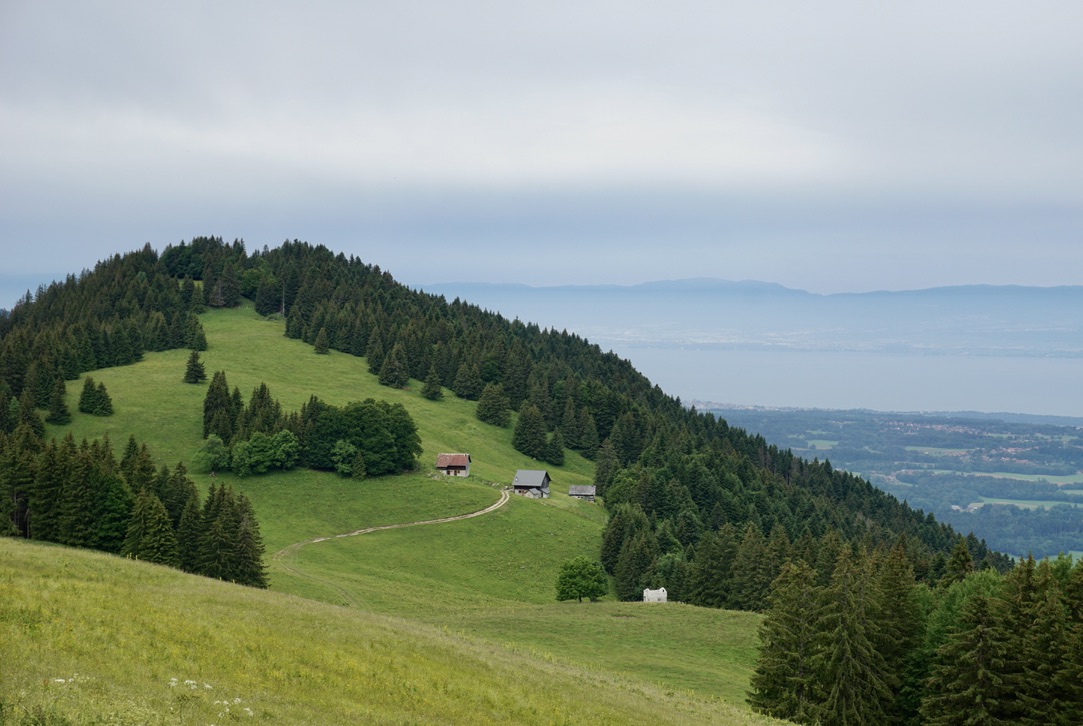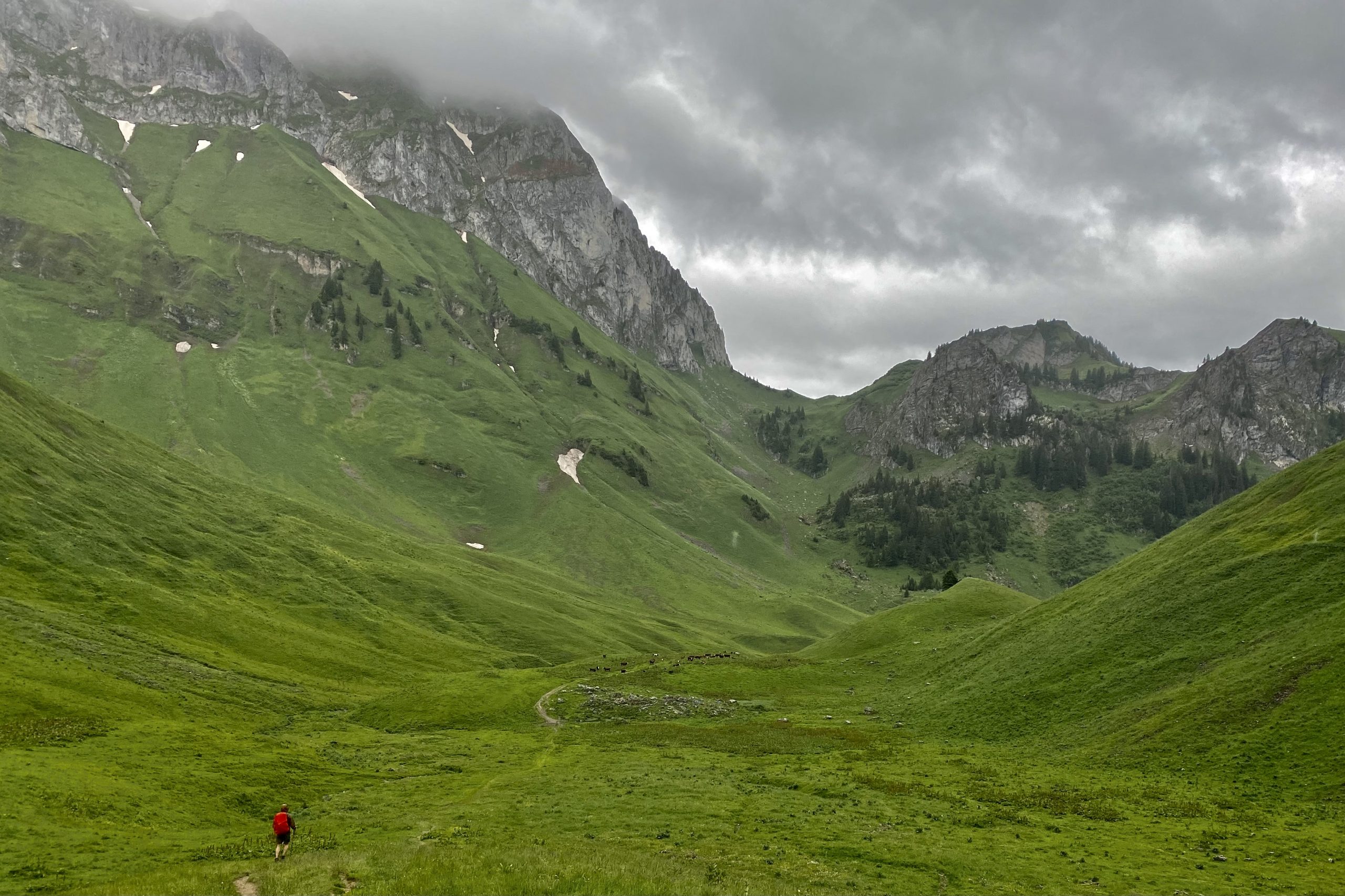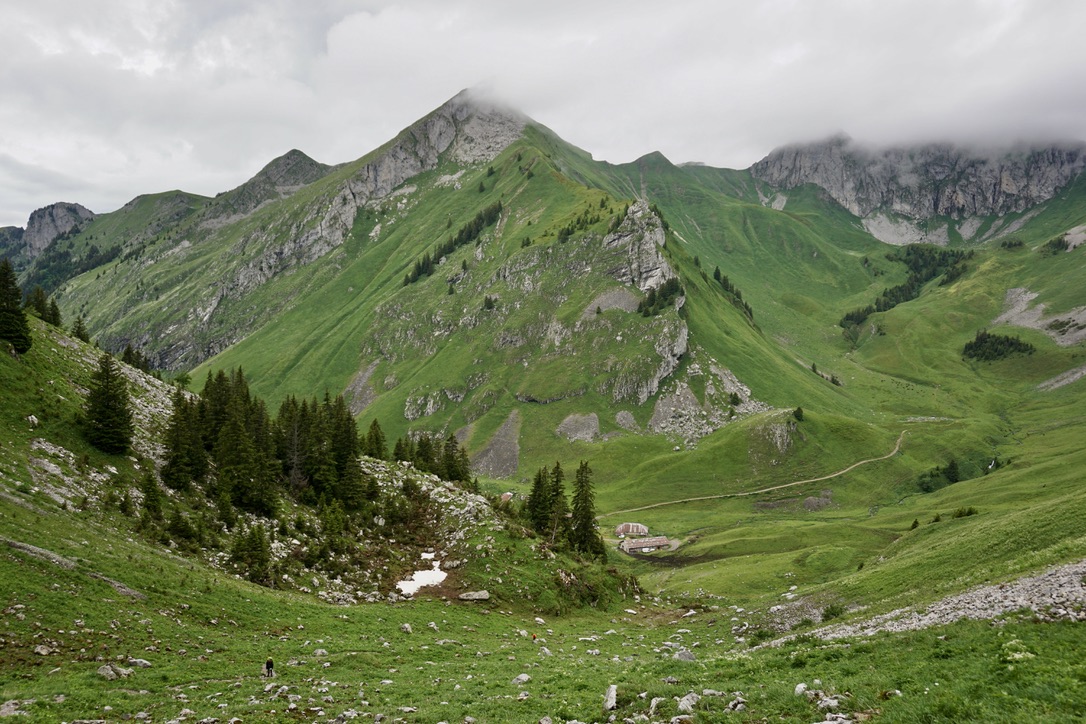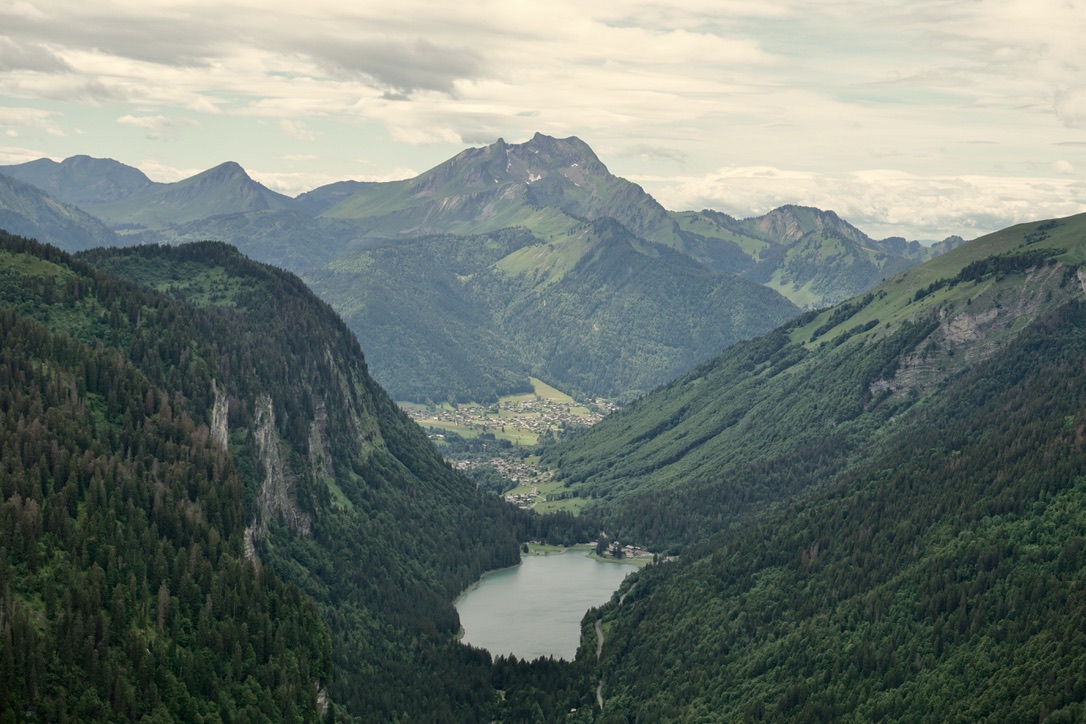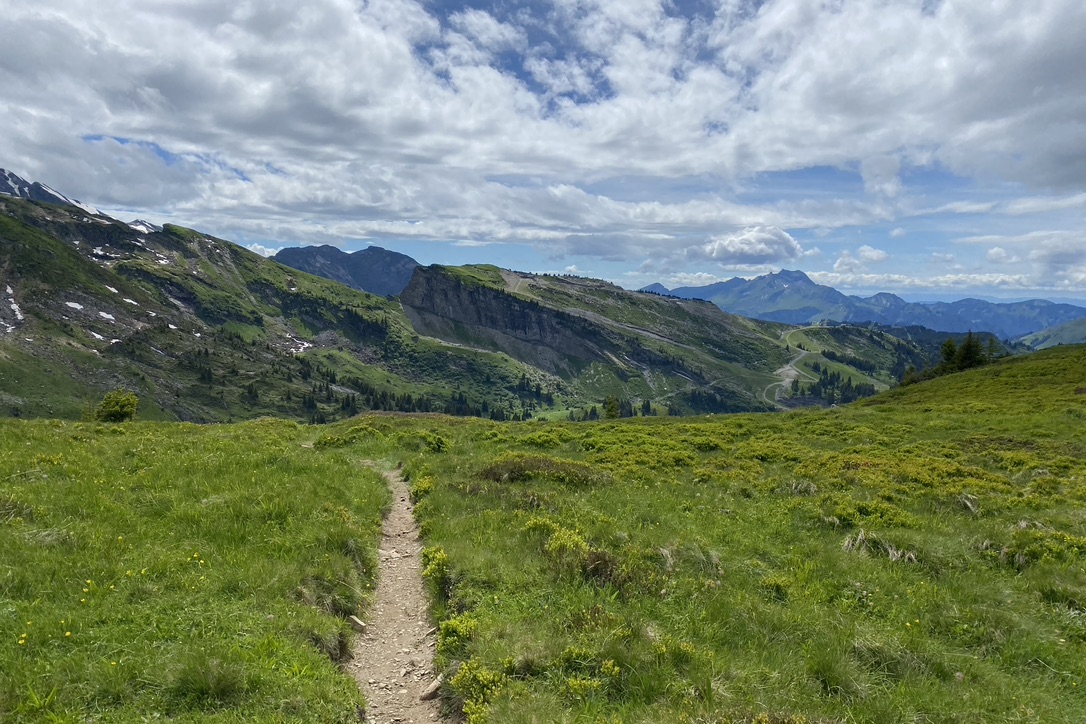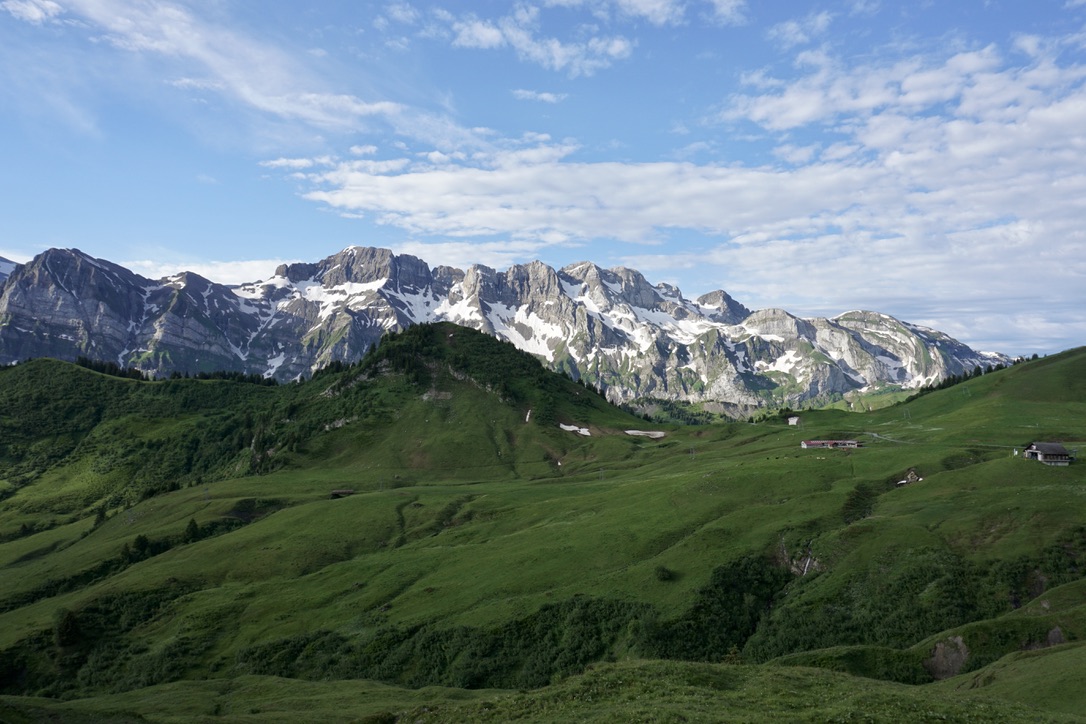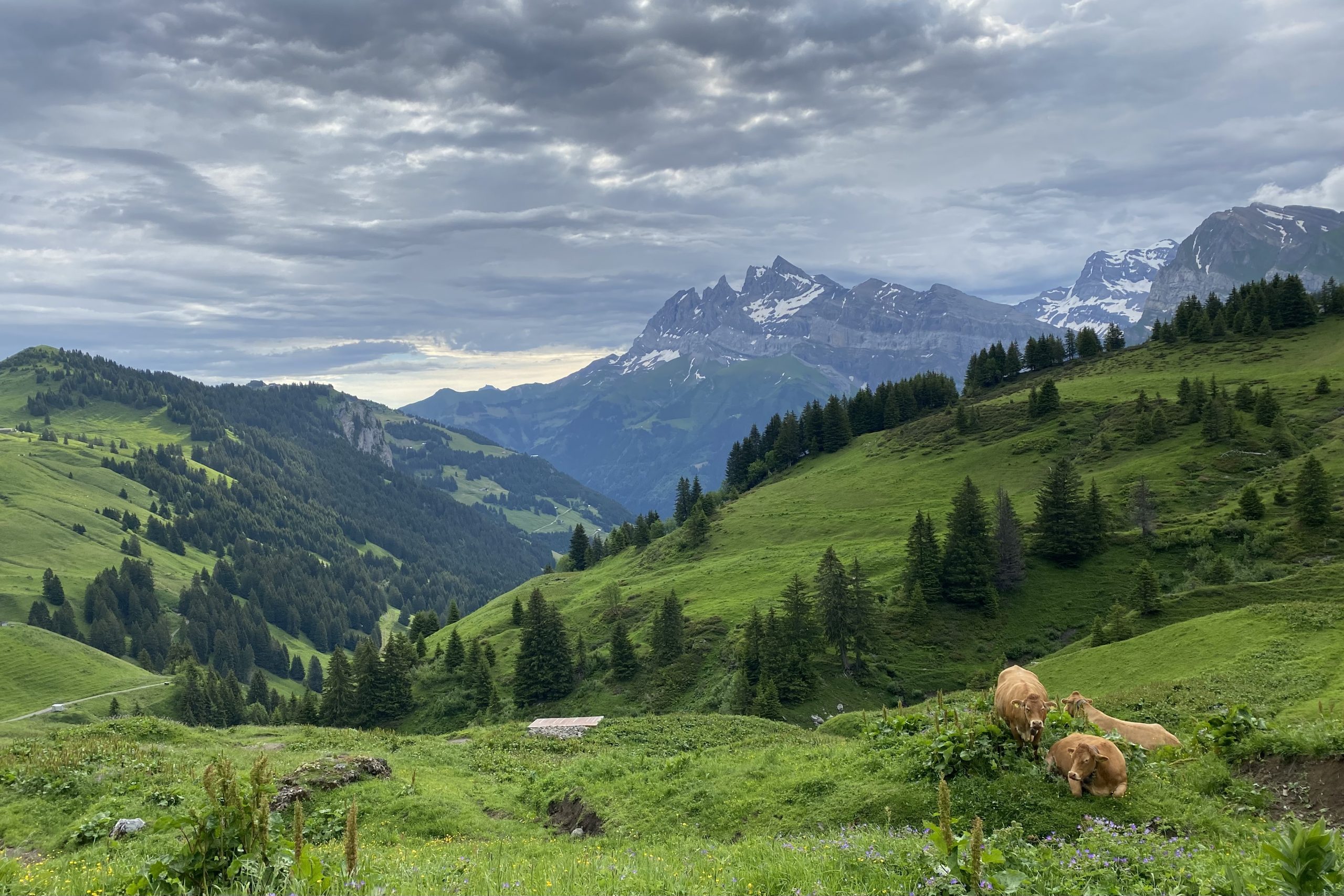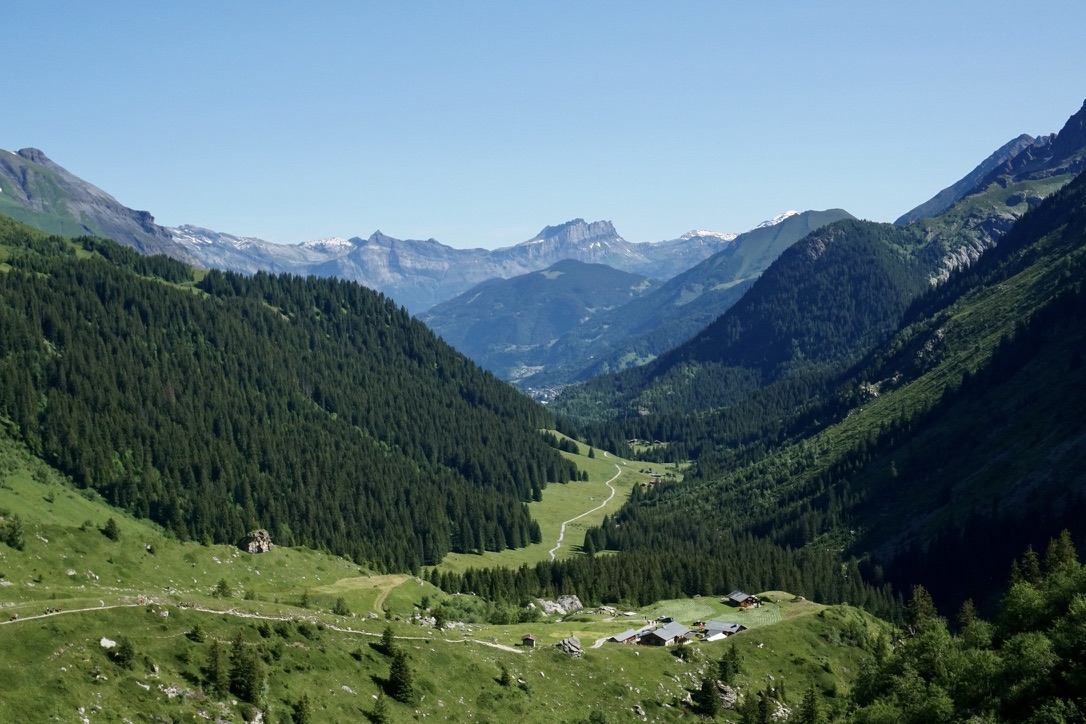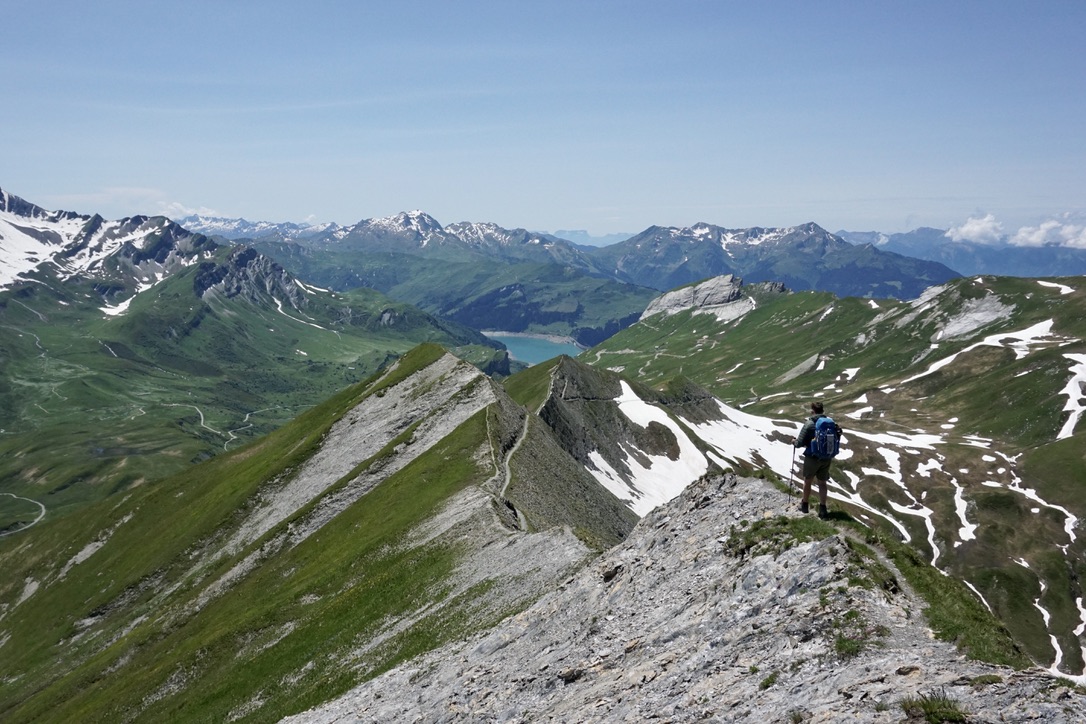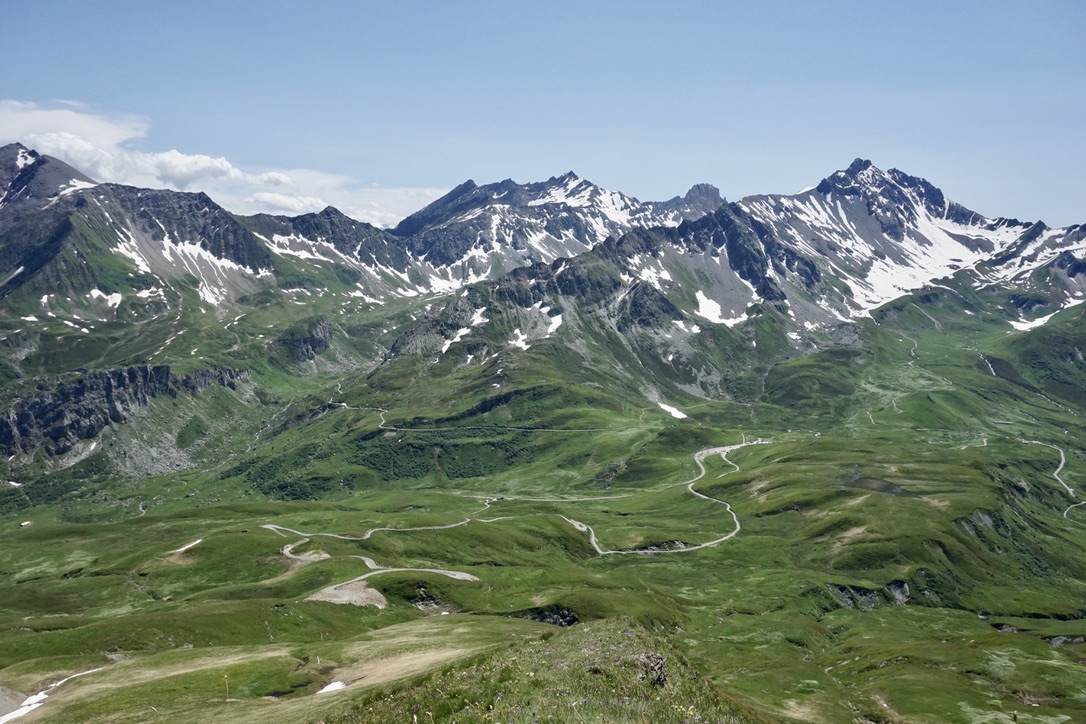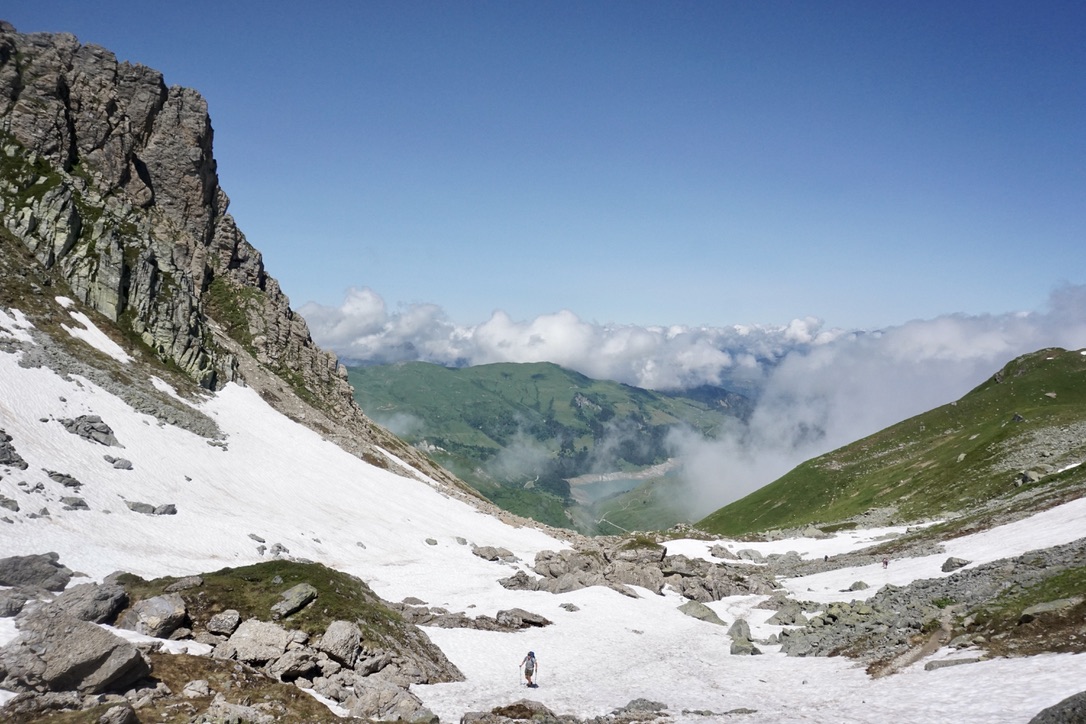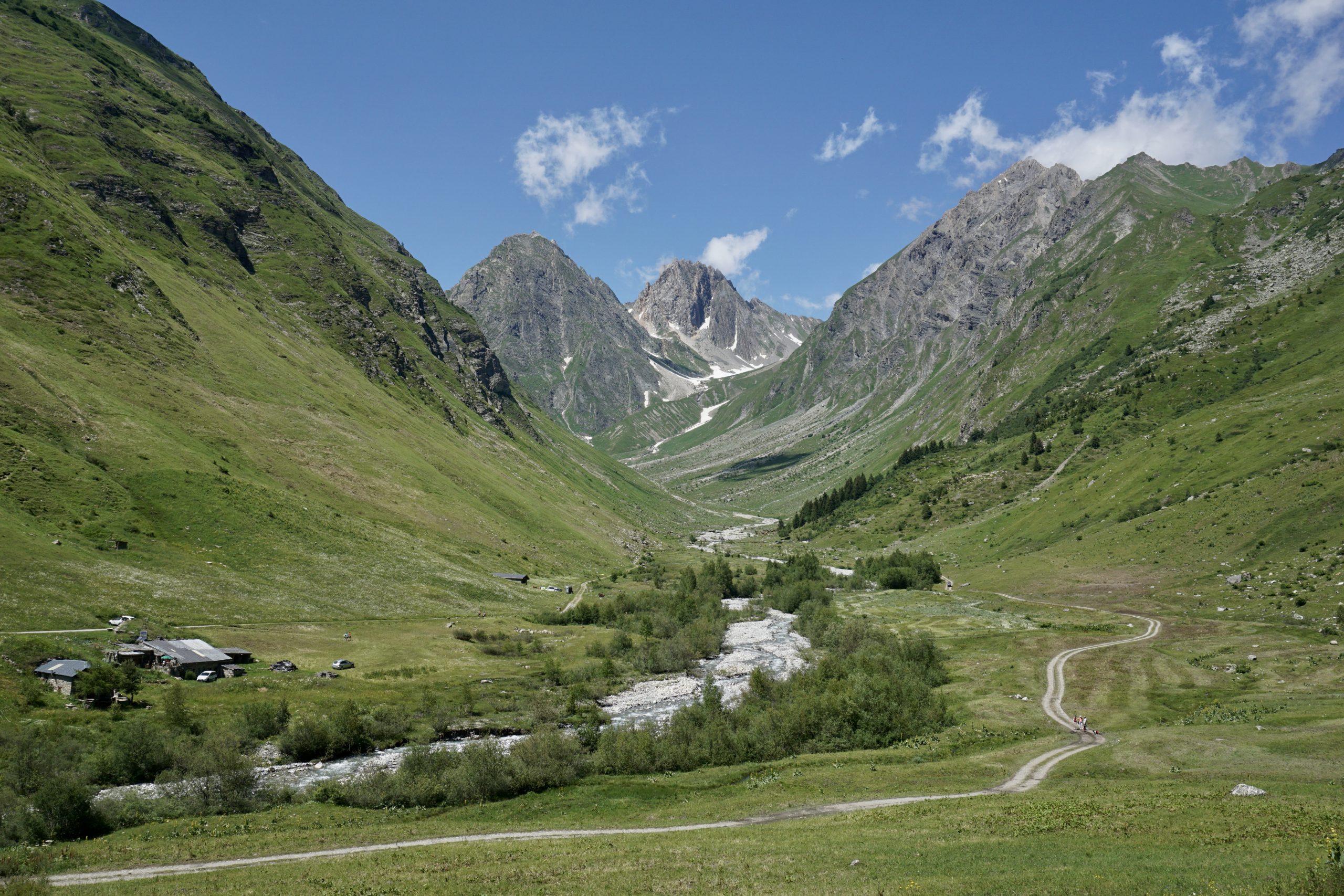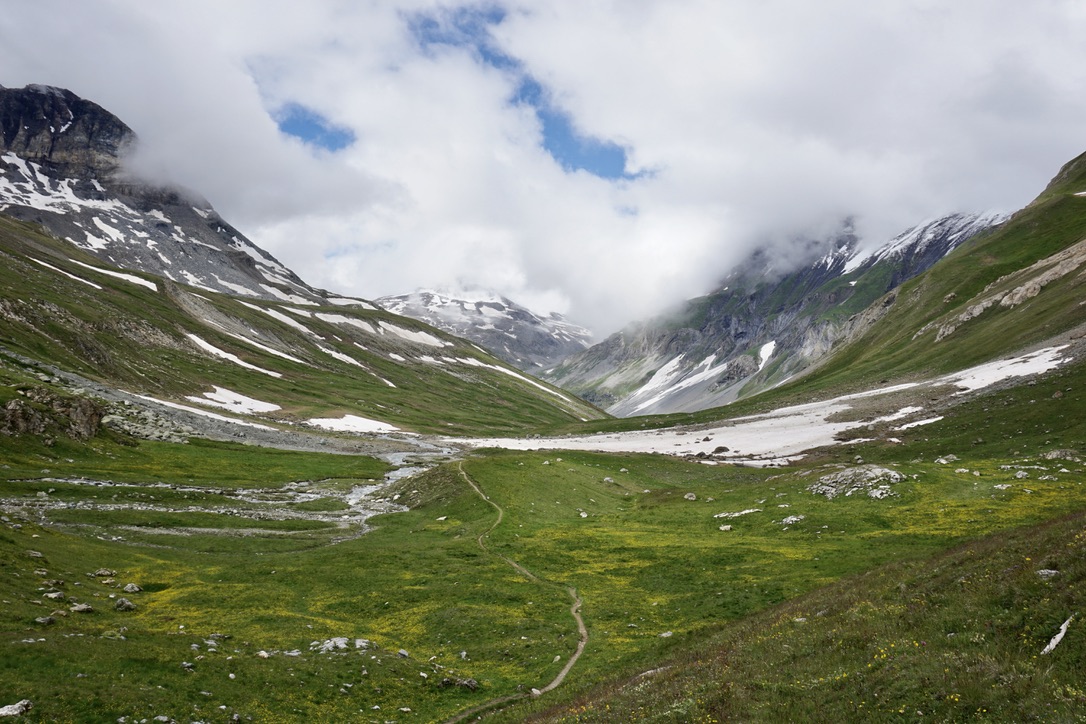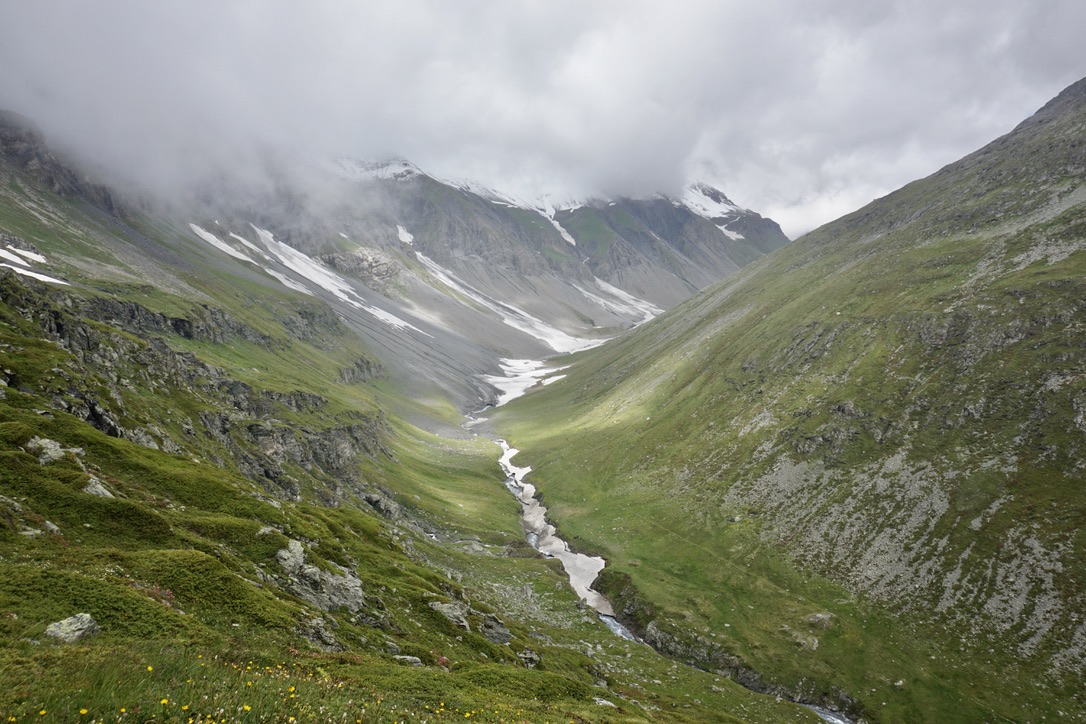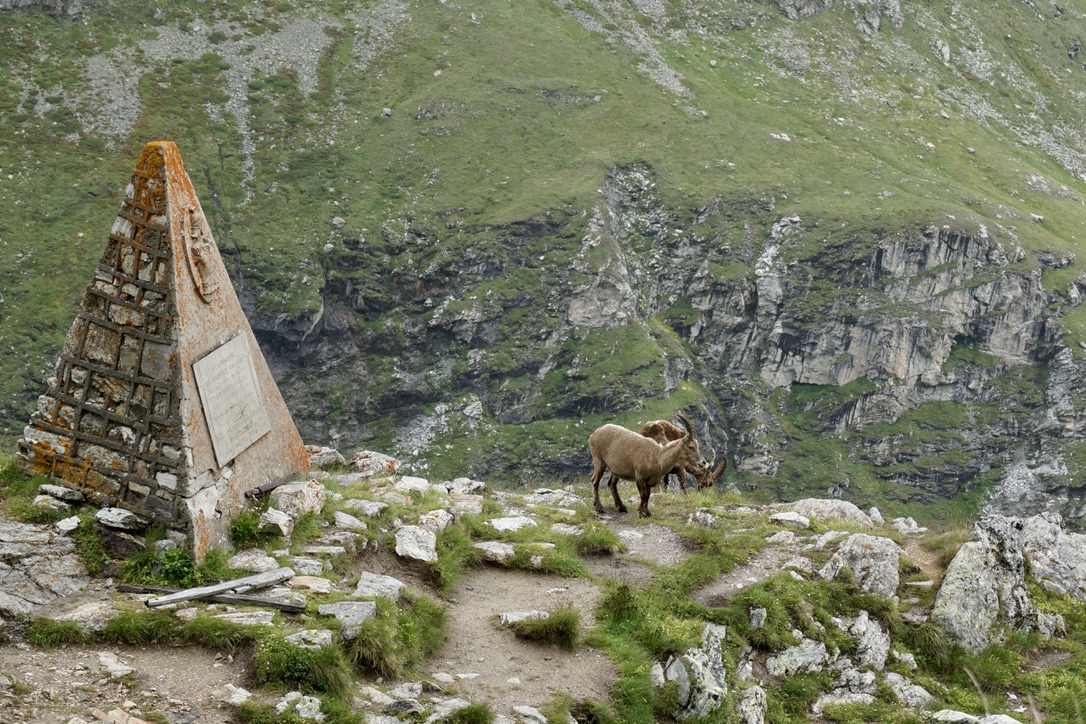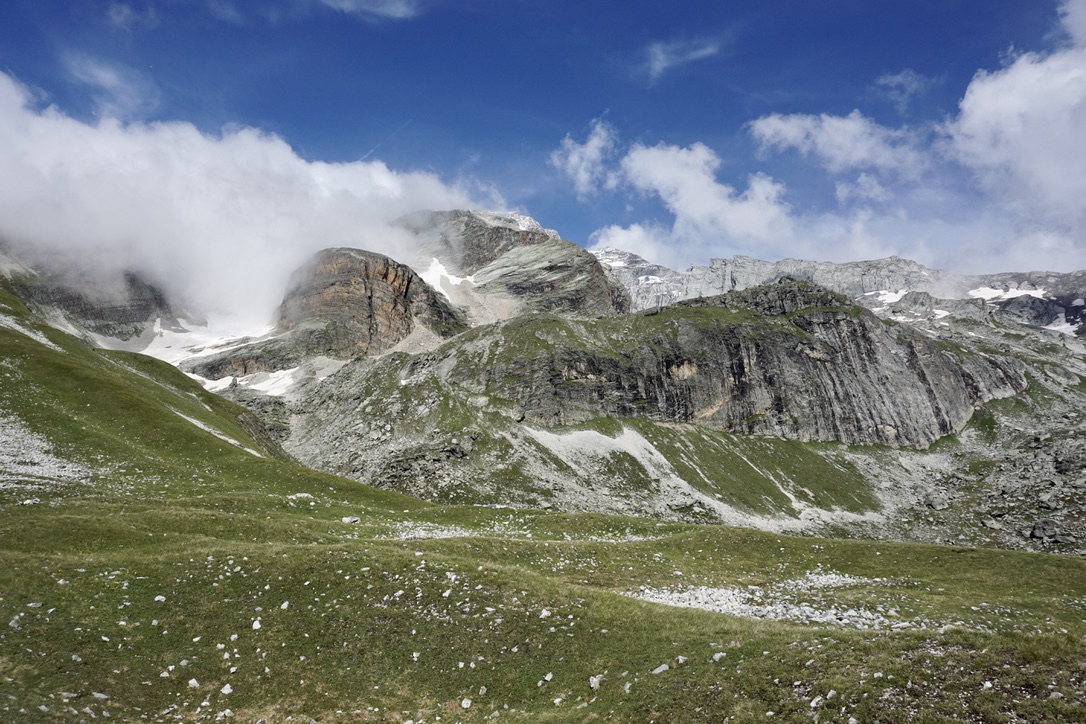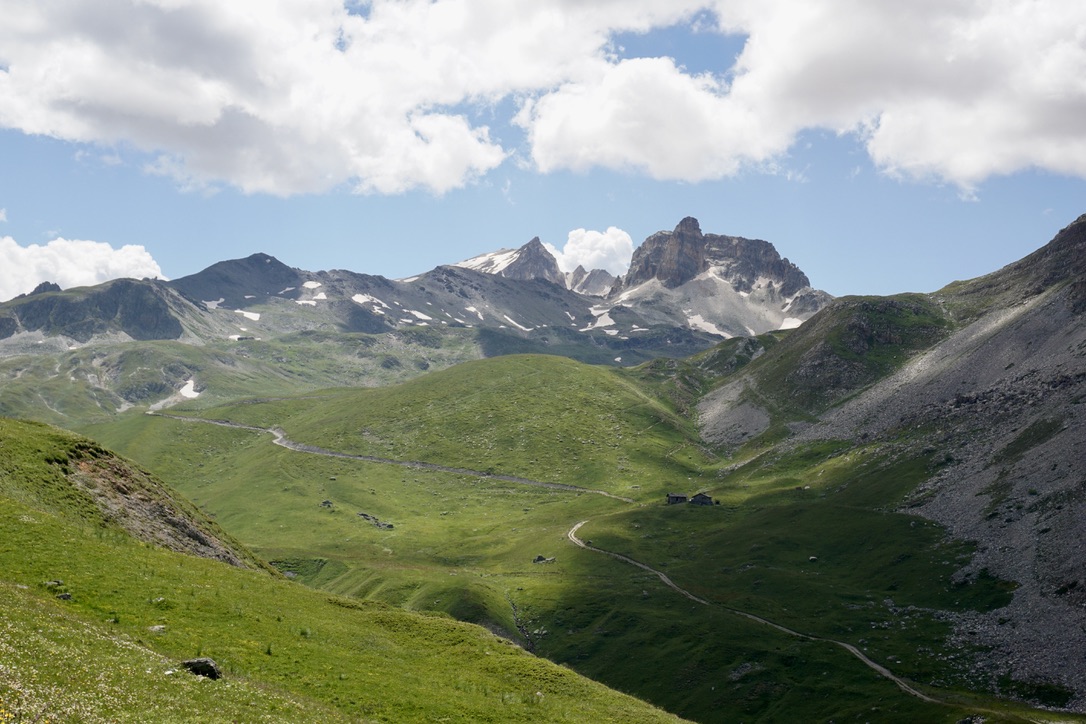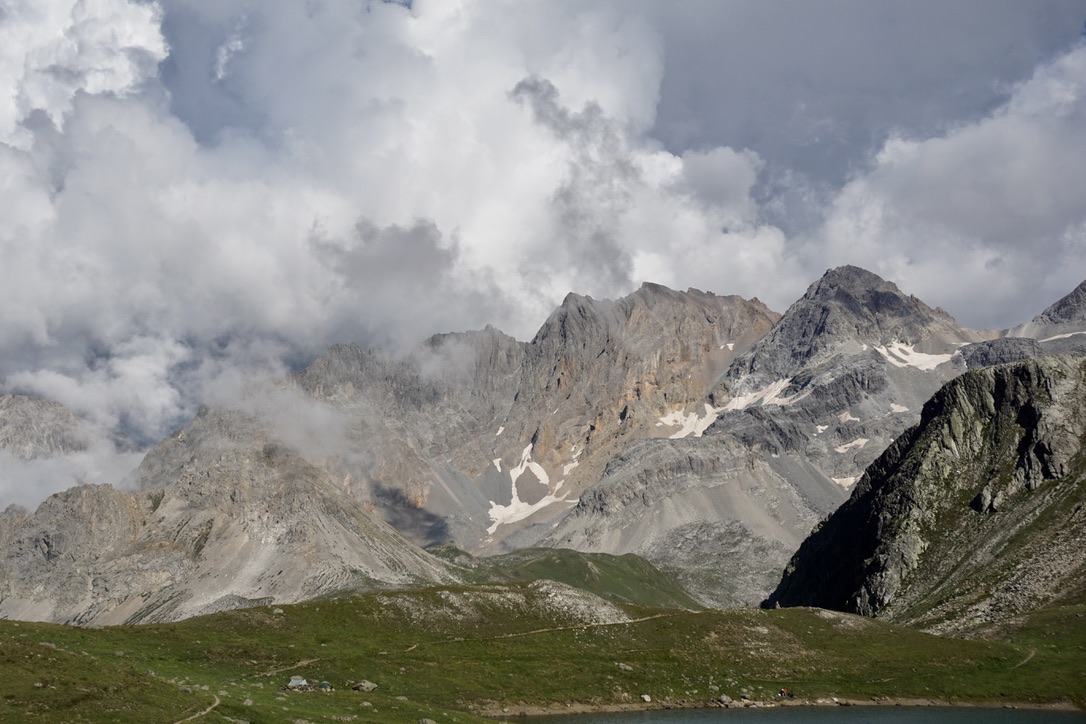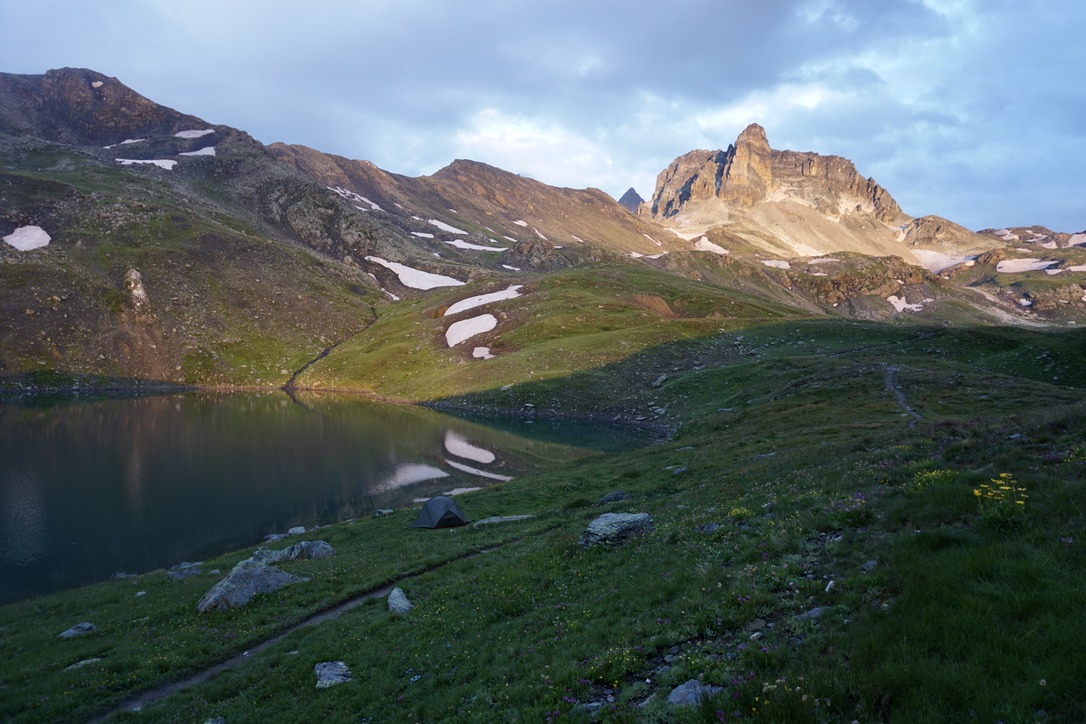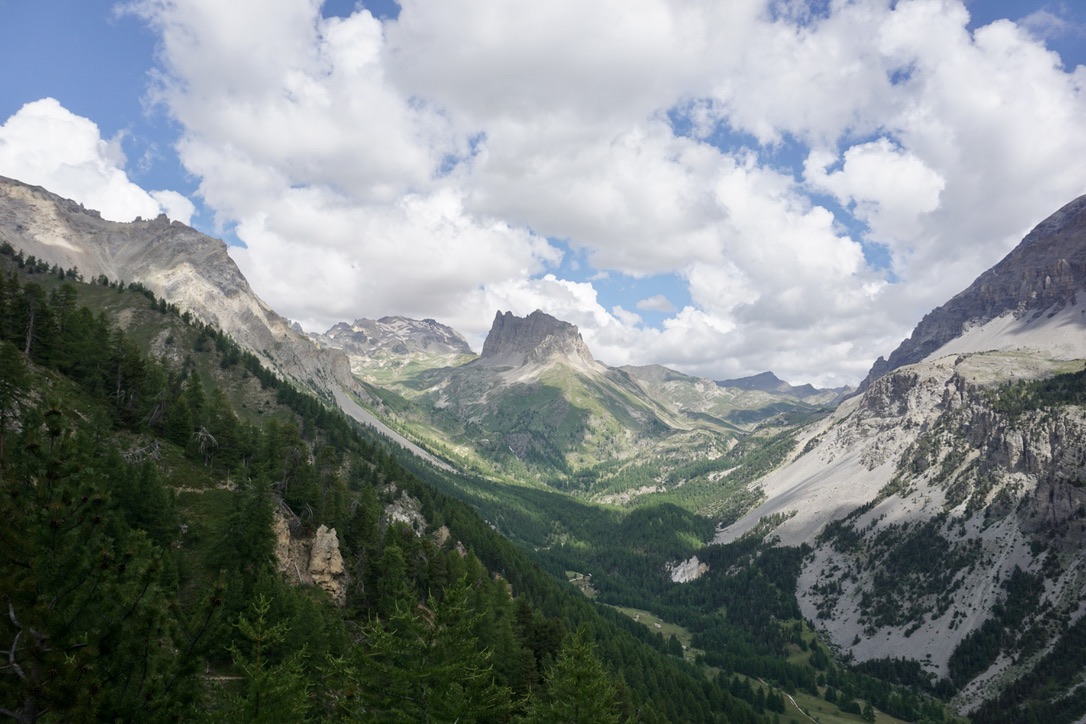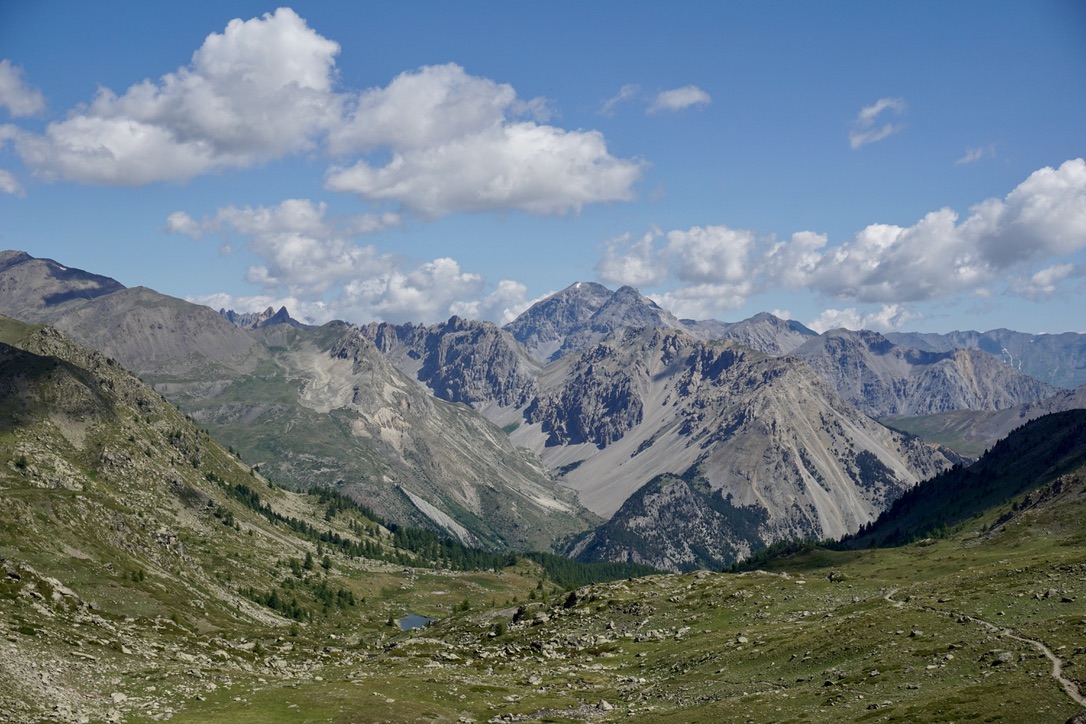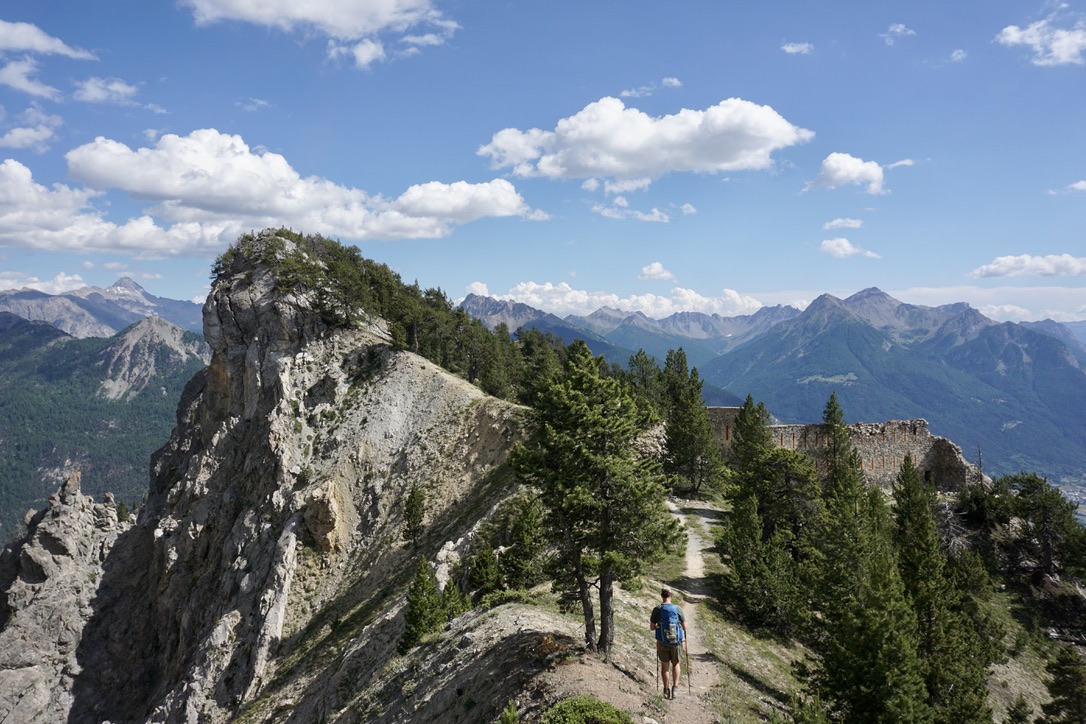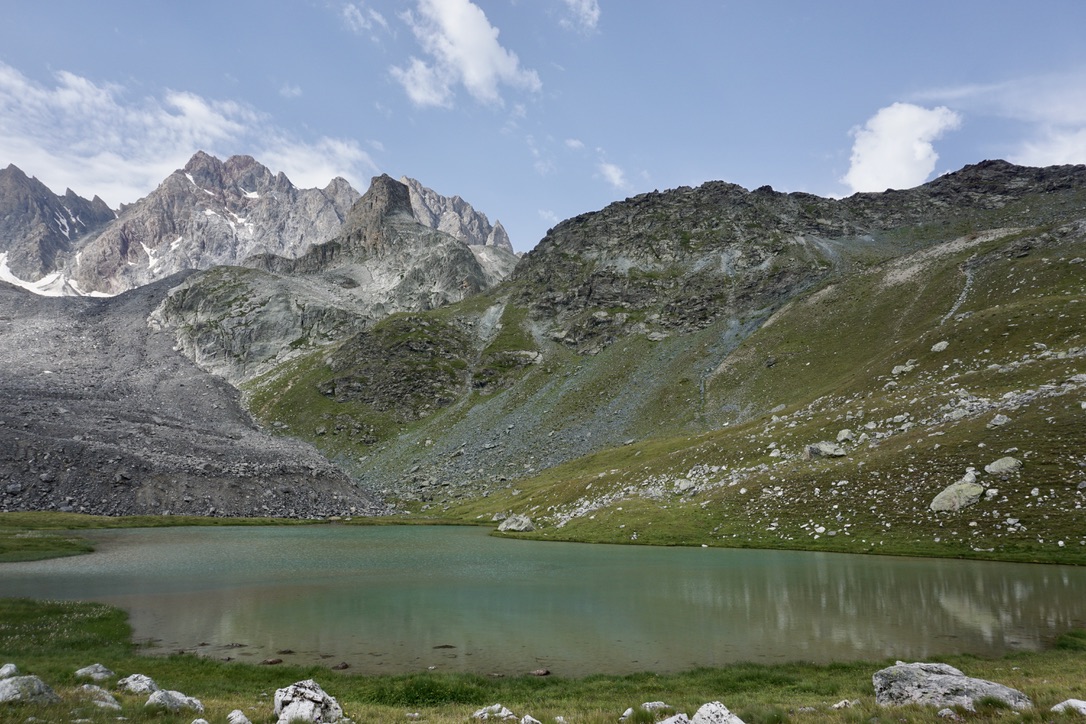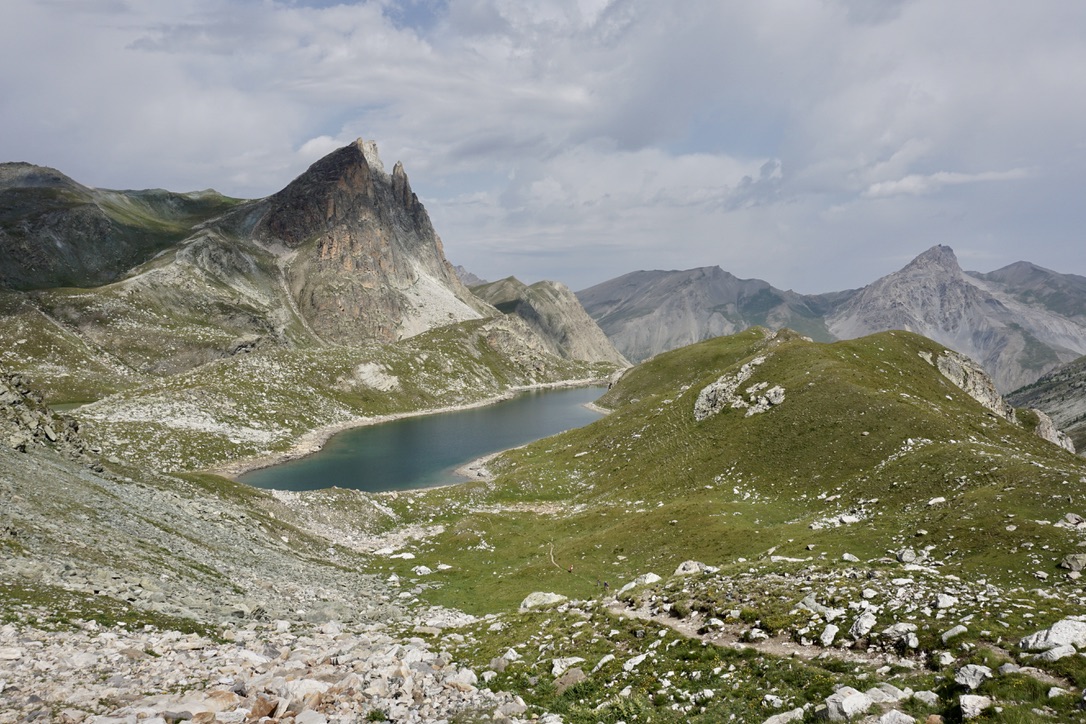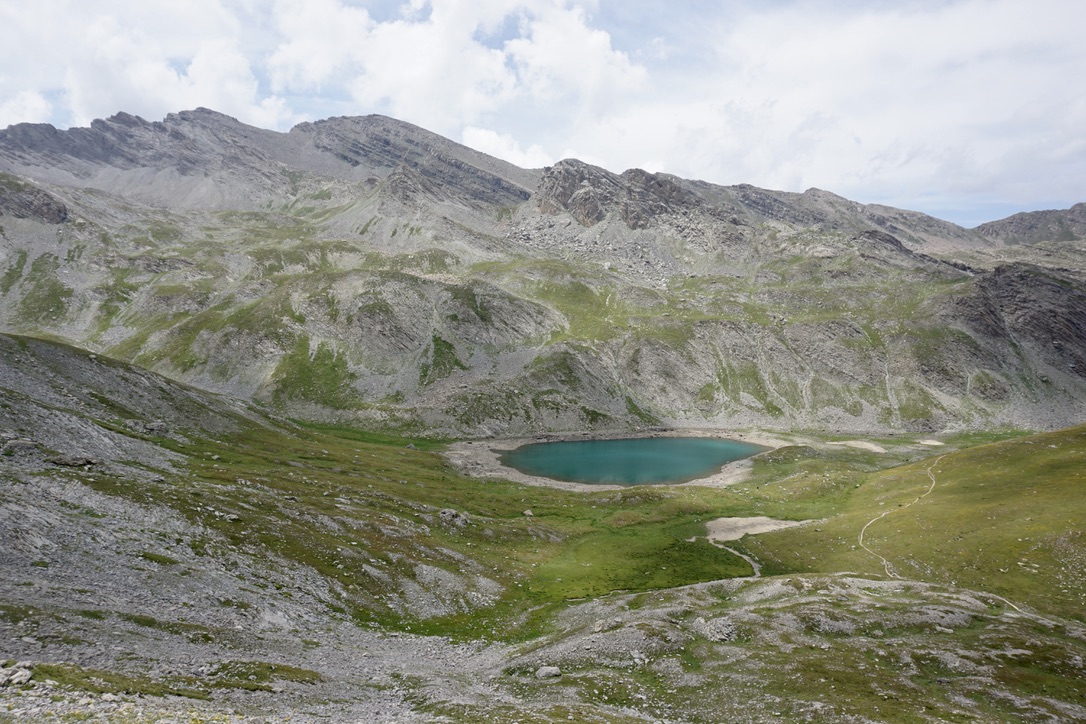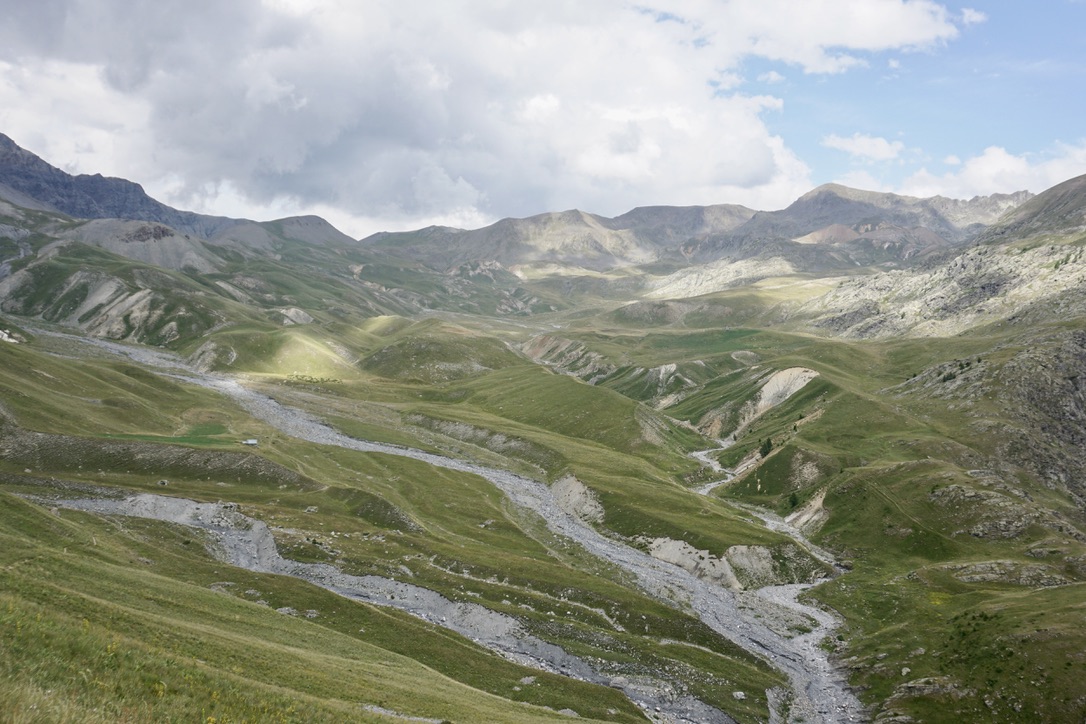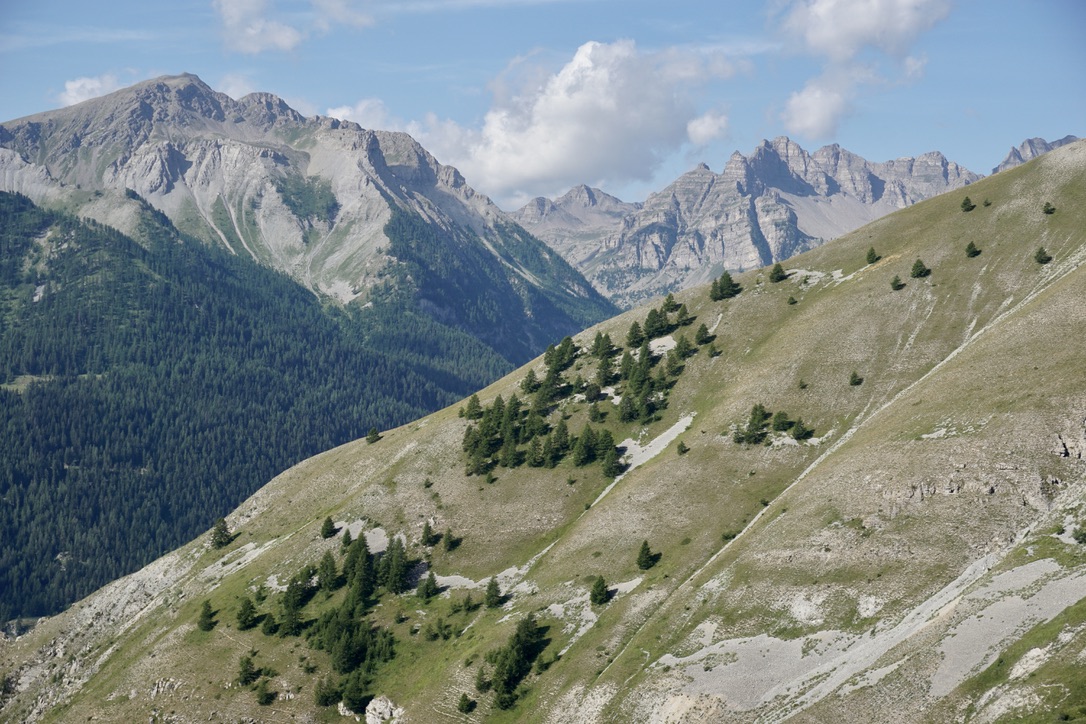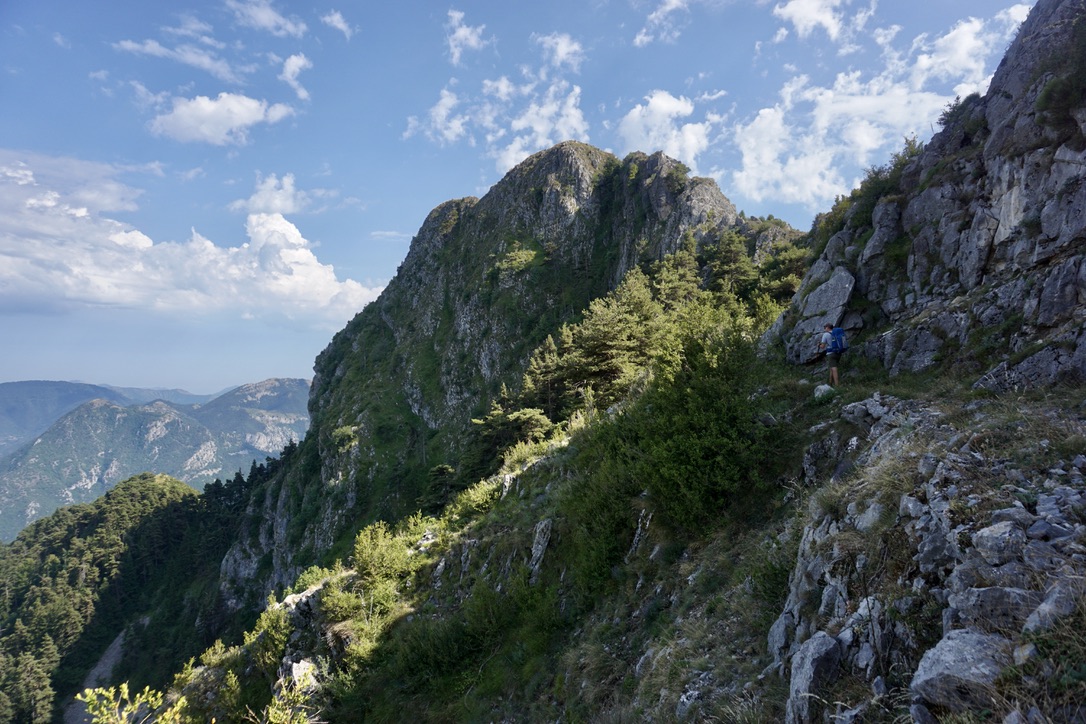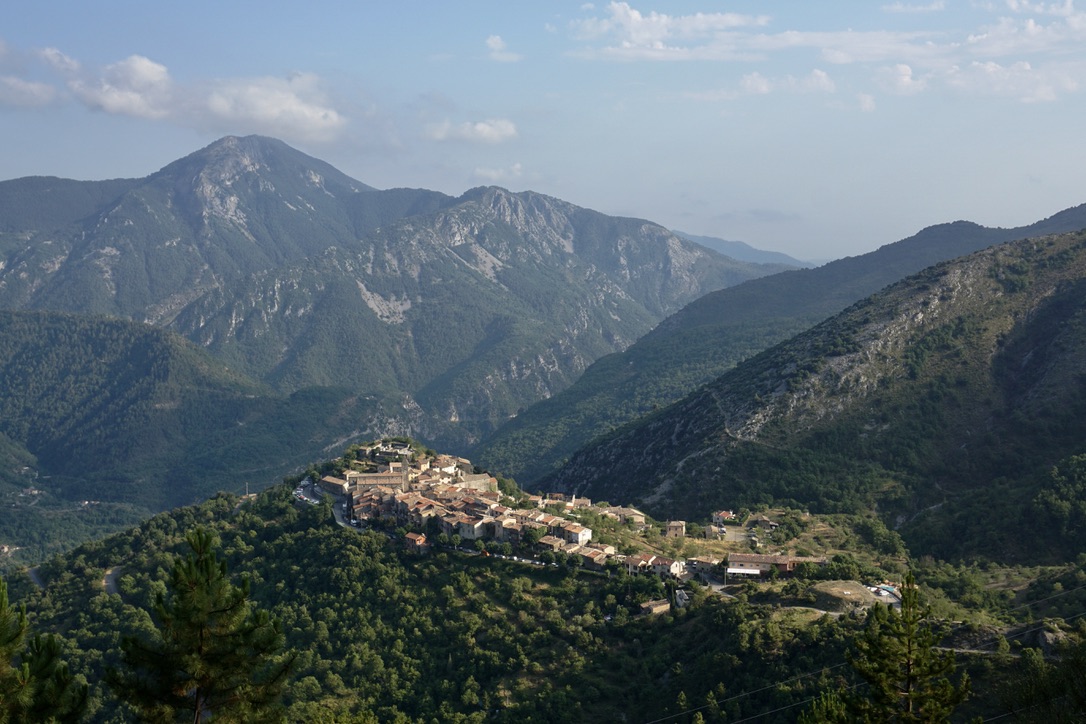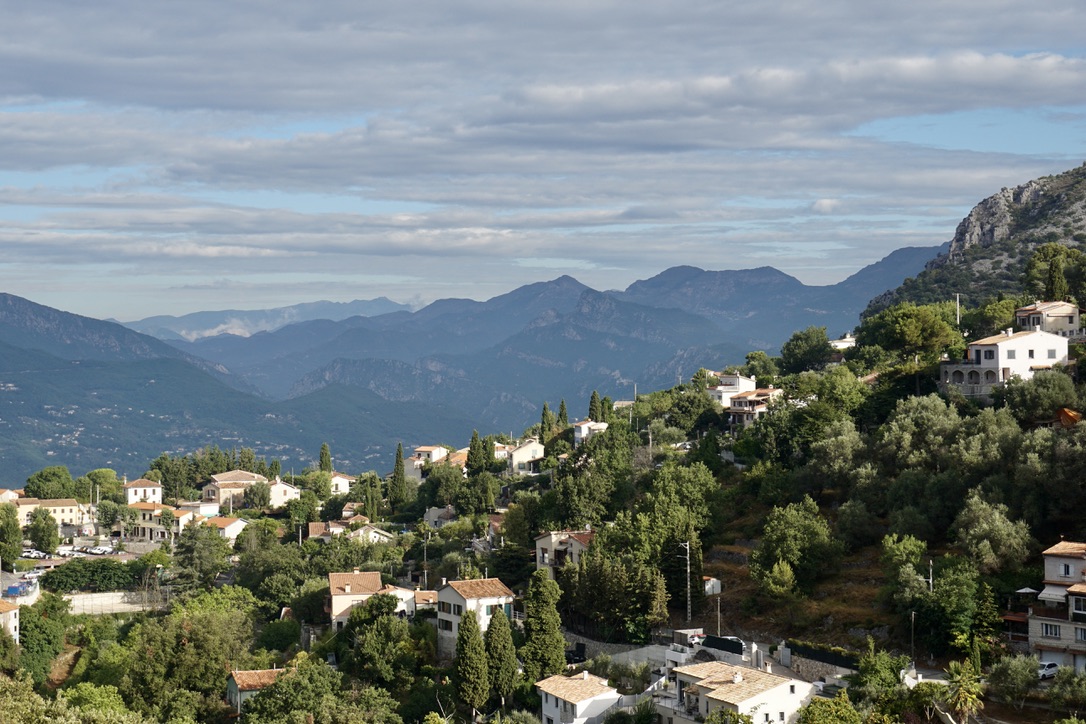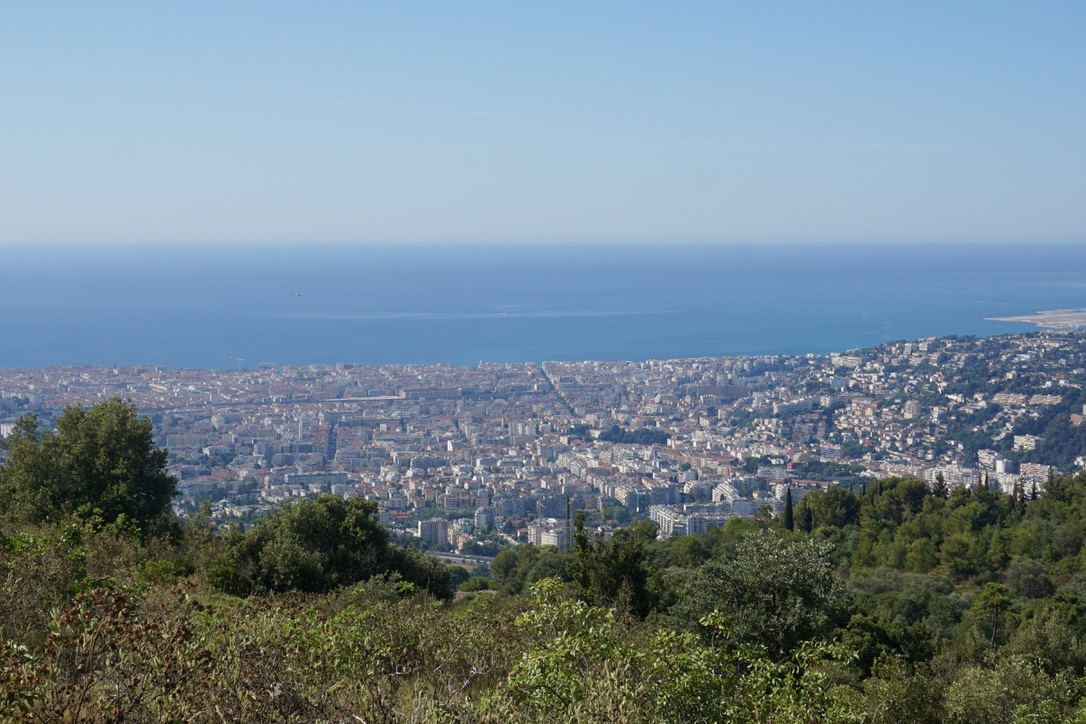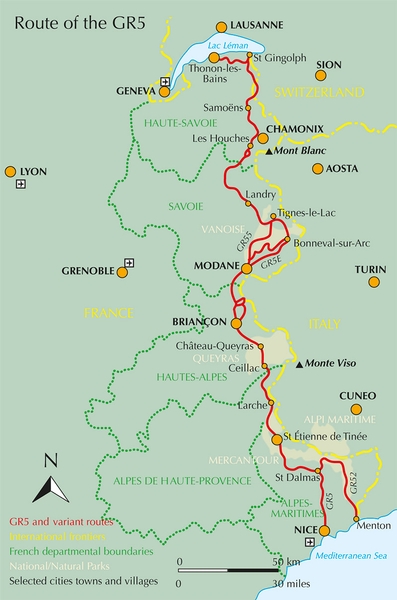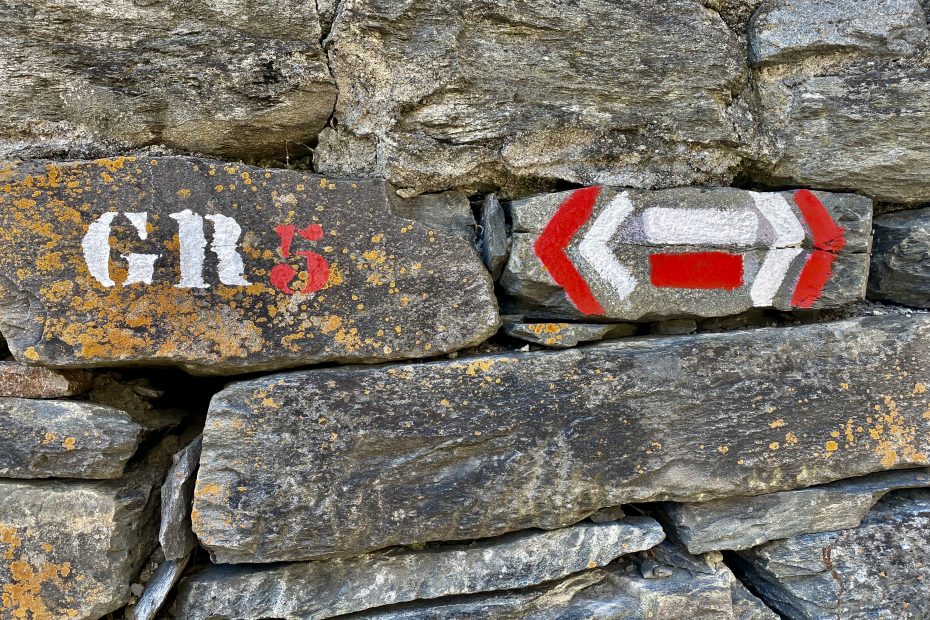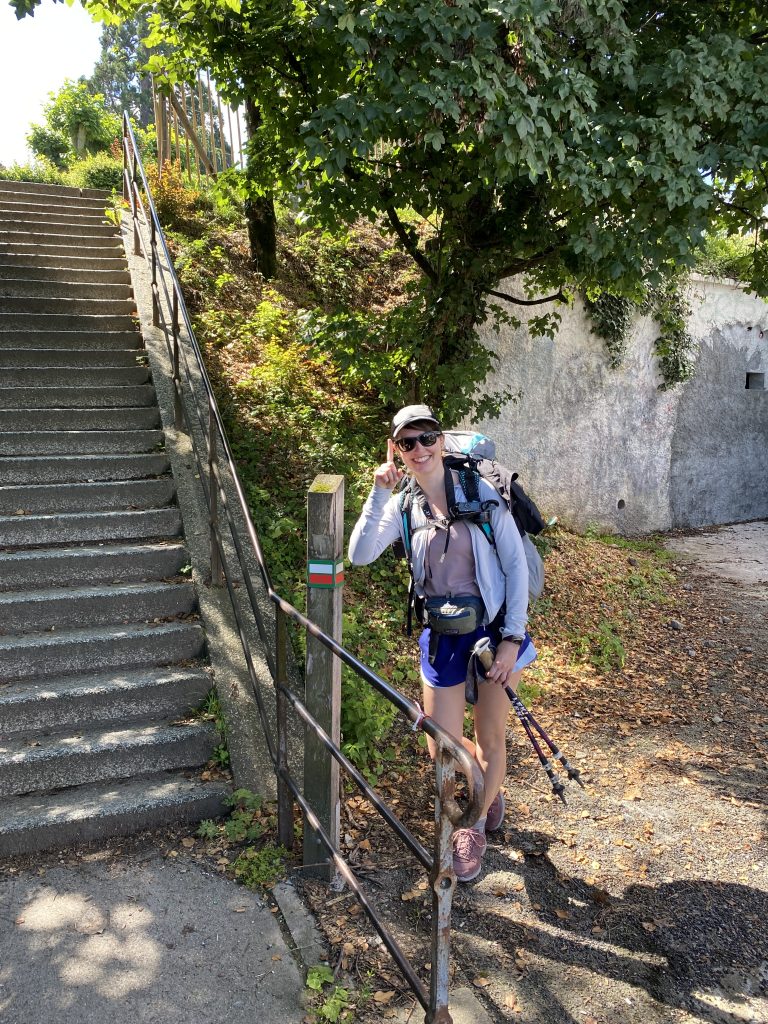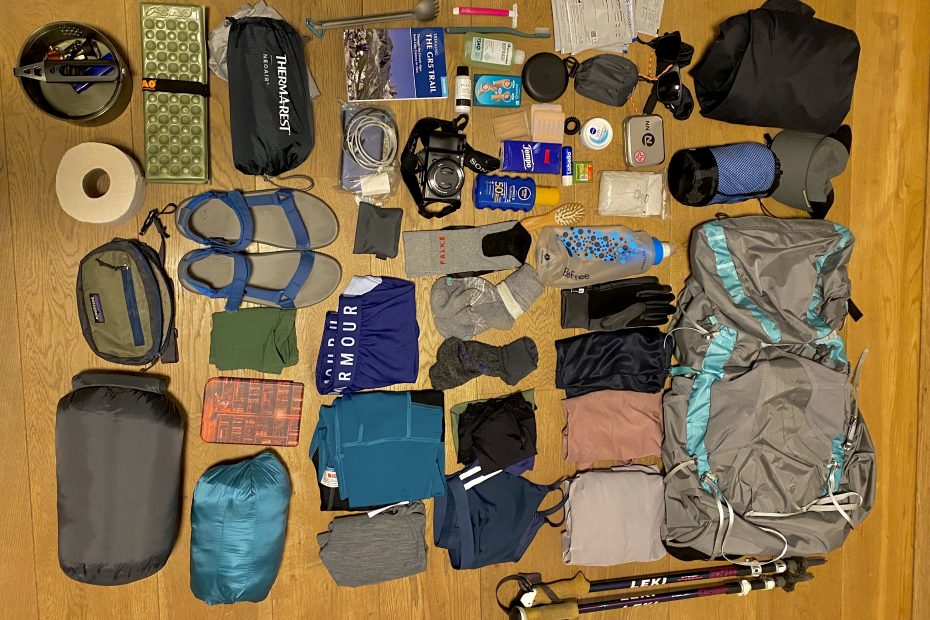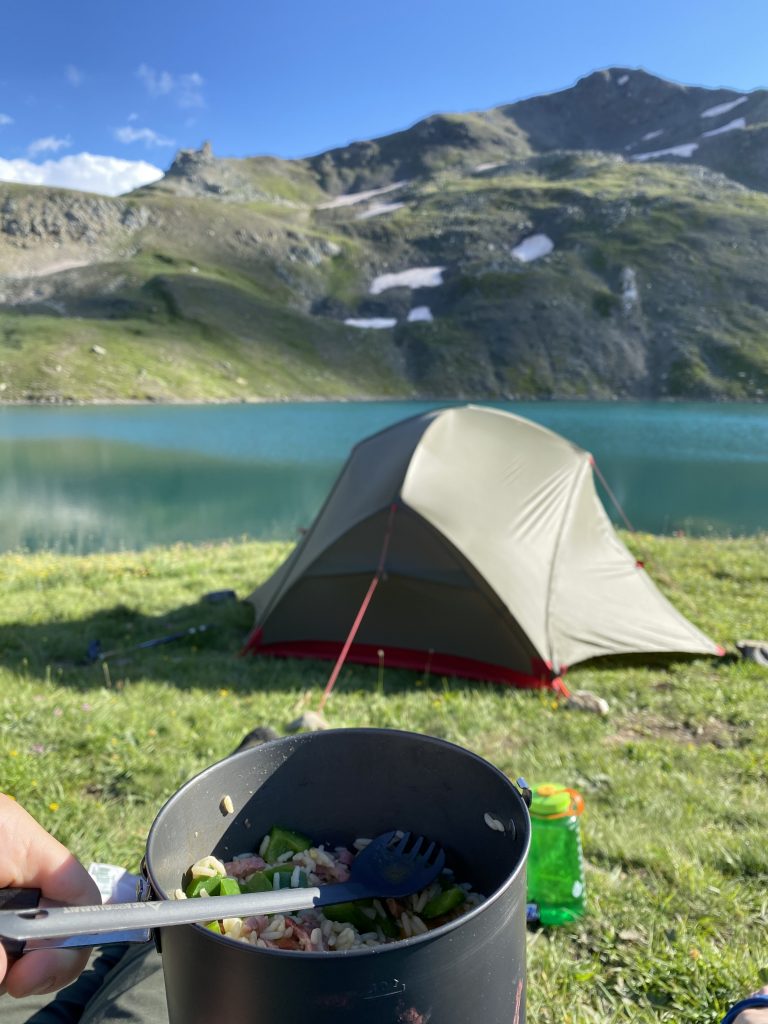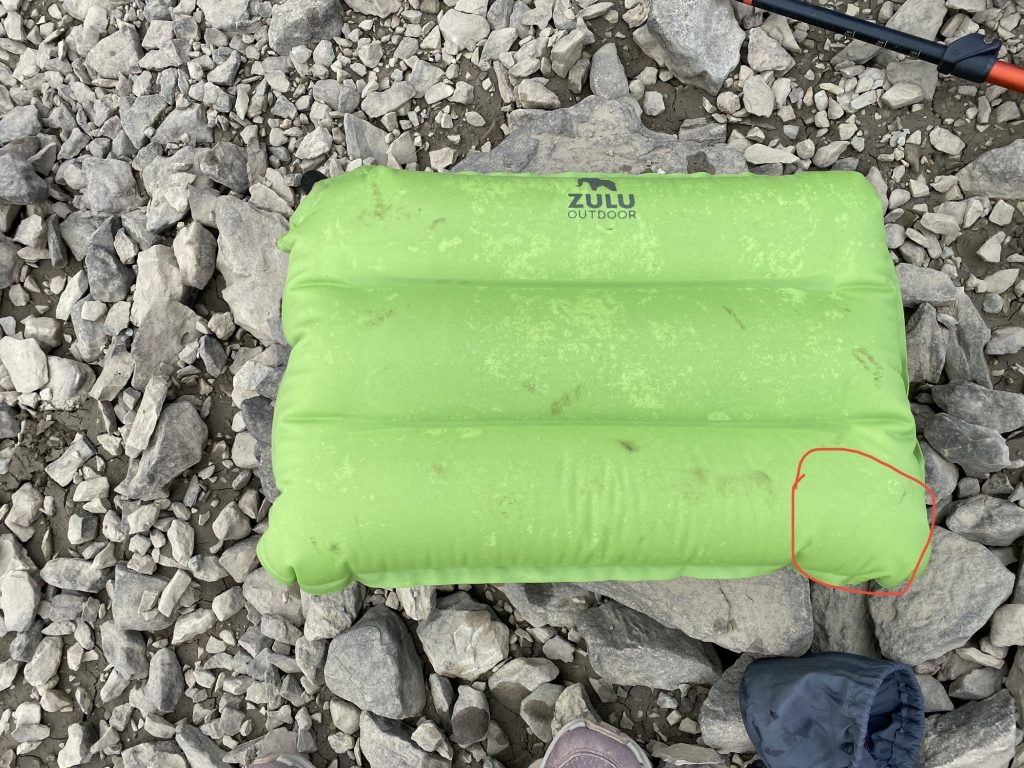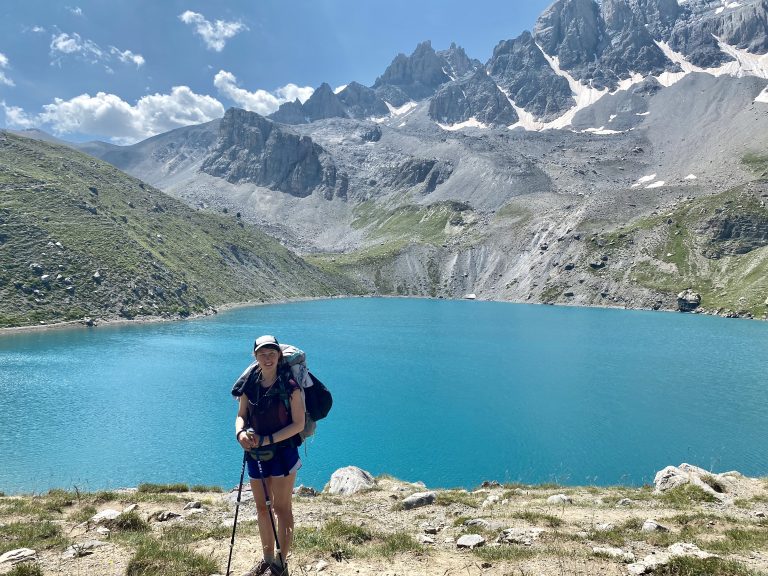A guide to GR5: Geneva lake to Nice

About GR5: One of Europe’s truly long hikes, GR5 spans from The Netherlands until Nice in south France. 2,300km through different terrains: from the Dutch dunes and dikes, Belgium and Luxembourg forests to Vosges hills and French Alps. You can hike the whole trail in one go, which should take 4 – 5 months, or you can “collect” the trail in sections as stages are easily accessible.
Grande Traversée des Alpes: The most famous section of GR5 is a trek through the French Alps from Geneva lake to Nice. It is called Grande Traversée des Alpes, while many hikers simply call this section GR5. So if I told a french person that I walked GR5, they would assume I did the Geneva – Nice route.
In any case, it is a spectacular route to hike with France showing off some of its best landscapes. Some of the highlights include hiking close to the famous Mont Blanc, Vanoise national park, Queyras regional natural park, and Mercantour national park. I was surprised by the diversity of landscapes and different characters of each region. It was definitely an adventure!
How long does it take? It’s a truly long-distance hike. Thru-hikers and ultralight backpackers might be able to walk the whole trail in 3 weeks, while on average it takes around 4 – 5 weeks. The duration depends on your physical condition and itinerary choices. As you can see in the map on the left, the trail has a lot of options, which can prolong or shorten your trip.
I went on this trip together with my boyfriend and we did it in 4 weeks (excluding 3 rest days). On average we hiked 8 hours a day, covering around 22 km and approximately 1.2km elevation gain/loss. You can find more information on this topic in the Itinerary section below.
Difficulty: I found this trail rather difficult. It is (mostly) not a technically difficult trek, no alpine skills or special equipment is needed. However, to hike the whole thing in one go, you should be physically and mentally prepared. Quite often we had to cross a few passes in a day, which is physically demanding. The weather challenged us in all possible ways: rain, storms, hail, heat – we had it all.
Spending a full month on a trail with your whole life on your shoulders is not easy and you should have a great reason why you’re doing this. There will be tough times that will challenge your motivation to go on. In the end, nobody is forcing you to walk it 🙂 When I look back, I had countless fantastic moments on this trip, but I also had to work for them.
Itinerary
When to hike GR5. As most of the hike goes through French Alps, a hiking season is somewhere between late June to early September. We hiked it in July (starting on the 1st of July) and still had quite some snowy sections in the beginning. The last week was approaching August and we experienced the heat of the Mediterranean the closer we got to Nice. In terms of crowds, the trail was relatively quiet, except for some popular sections, such as Les Houches to Col du Bonhomme, which is also where TMB trail goes.
Where to start. There are two starting options: Thonon-les-Bains in France or St Gingolph in Switzerland (at the border to be precise). We started in Thonon-les-Bains as it was easier to reach it by public transport (we were coming from the Netherlands) and we wanted to ease into the hike since this starting point meant a more gradual start. It is a longer option than the St Gingolph trail as it takes two days to reach La Chapelle d’Abondance while from St Gingolph it is only one steep day. If you’re short on time and physically ready, the Swiss option might be better for you.
How to get to the start. We traveled by trains from the Netherlands, so the journey looked like this: Rotterdam – Paris – Bellegarde – Thonon-les-Bains. It took us ~ 10 hours to get there. While St Gingolph is on the border, the train station is in Switzerland, so getting there would have been much longer as we would have to reach Geneva first and only then continue to St Gingolph all the way around the lake. For those arriving in Geneva airport or coming from the east side of Europe, St Gingolph might be more convenient though.
In Thonon-les-Bains we did not find any grand start of the trail with a huge post indicating the direction to Nice 🙂 We just started seeing red-white way-marks on Rue Jean Blanchard and followed them. Once we crossed a footbridge over the train station, we saw the first way-mark pole and decided to call it the official start for us.
Itinerary. Our itinerary followed most of the stages outlined in the Cicerone guidebook, which was our main guide for this trip. The book outlines all the options and variants thoroughly, but caution should be taken when looking at the duration of each section.
While hiking pace is a very individual thing, this guidebook indicates purely the hiking time. You should add extra time to see how long the whole day will take you from start till finish and that depends a lot on your hiking habits. How long are your lunch breaks? How often do you take rest breaks? How long are those breaks? I would suggest adding an extra 20 – 25 % to the time indicated in the Cicerone guidebook and then adjusting your estimates after a few days of hiking as you’ll know your pace better.
Our variant choices and detours. There are quite a few options to choose from when creating the GR5 trail and we also made a few detours either willingly or because of the problems on the trail. The best approach is to stay flexible and remember, you always have options. Below are our choices/detours and the reasons why.
- Start in Thonon-les-Bains: we chose this start as it was easier to reach and a more gradual climb, which is still tough after a year living at sea level 🙂
- Chalets d’Anterne (also known as Refuge Alfred Wills) to Les Houches via Servoz: due to bad weather and snowy trail conditions we were strongly advised to not hike to Les Houches via Brévent. Instead, we descended to the valley from Refuge de Moëde Anterne and arrived in Servoz, from where we took a train to Les Houches.
- Les Houches to Les Contamines (low variant): we chose this option simply because we hiked the higher variante via Col du Tricot two years ago while on Tour du Mont Blanc (TMB). The higher option is much more scenic, so if you haven’t been to the area before, I would recommend that option instead. The low option is great if you’re still sore from previous days as you’ll have a shorter and easier day while passing several mountain villages.
- GR55 high-level route Landry – Val Claret – Pralognan – Modane: there are quite a few choices to be made in terms of a route between Landry and Modane. We chose the high-level route as it was supposed to be very scenic and show some of the best parts of Vanoise national park. Unfortunately, we had very bad weather most of the time, but we still saw some of the great Vanoise valleys. I’d love to go back there in good weather, so I definitely recommend this route.
- Refuge du Thabor – Roubion (close to Névache) – Briançon via GR5C and variant route along the Crête de Peyrolle: we chose GR5C just because it seemed easier logistically, I still don’t have a strong opinion on whether GR5C or GR5B is better. Where I have a strong opinion is the variant along the Crête de Peyrolle. It was the worst section of the entire GR5. The descent to Briançon is a crazy steep “path” on loose gravel. I was scrambling, crawling and cursing while going down. This section took us way longer than expected just because of the trail conditions. I would definitely not take it again, the views from the ridge were just not worth the stress and effort.
- Maljasset – Chiappera – Larche: this was a spontaneous detour we made. The host of our hotel in Maljasset recommended it as a nicer option to reach Larche instead of the regular GR5 route which has a long road walk. Time-wise it took us one extra day, but we visited Italy and a beautiful Maira Valley. A great detour for those who have extra time.
- Auron – Beuil – St Dalmas: during the summer of our GR5 hike, Refuge de Longon was closed and there didn’t seem to be any wild camping options around it, so we descended to Beuil and from there hiked to St Dalmas. It was a long detour with a lot of ups and downs and Mediterranean heat.
- St Dalmas – Nice: there is an option to leave GR5 at St Dalmas and hike the GR52 trail to Menton instead of Nice. Menton option is considered a more spectacular option, leading through Mercantour National Park, but it takes 2-3 extra days. After all the unexpected breaks we didn’t have that much time anymore, so we chose to hike to Nice directly. If I had more time, I think I would have opted for the GR52 alternative.
* Duration includes all breaks (rest, lunch, photos, etc.), it’s the total time it took us to reach the finish location.
Day hiking Start Finish Duration* Distance (km) Elevation gain/loss Accommodation
1 Thonon-les-Bains Vinzier 06:45 23 940m/455m campsite in Vinzier
2 Vinzier Chalets de Bise 08:30 23 1630m/1060m Chalets de Bise
3 Chalets de Bise La Chapelle d’Abondance 02:45 8 330m/795m Hotel L’Escalade
4 La Chapelle d’Abondance Chésery 07:30 21 1495m/545m Wild camping before Refuge de Chésery
5 Chésery Samoëns 08:15 27 650m/1940m camping in Samoëns
6 Samoëns Refuge Alfred Wills 06:55 18 1355m/235m Wild camping next to Alfred Wills refuge
7 Refuge Alfred Wills Servoz train station 06:00 18 500m/1500m RockyPop hotel in Les Houches
8 Les Houches Les Contamines 05:45 19 955m/780m camping in Les Contamines
9 Les Contamines Plan de la Lai 08:30 24 1535m/825m Wild camping behind Plan de la Lai refuge
10 Plan de la Lai Landry 10:15 30 1075m/2120m Maison Caramel, private gite
rest day Maison Caramel, private gite
sick day Refuge de Rosuel
sick day Maison Caramel, private gite
11 Les Ames Val Claret 07:10 20 1330m/550m Studio in Le Borsat IV
12 Val Claret Pralognan 10:10 30 1020m/1740m Camping in Pralognan
13 Pralognan Modane 09:50 29 1450m/1820m Air B&B in Modane
14 Modane Refuge du Thabor 06:00 16 1500m/50m Wild camping next to Lac Rond
15 Refuge du Thabor Roubion 05:30 20 460m/1370m Camping in Roubion
16 Roubion Briançon 10:35 28 1355m/1670m Hotel Mont Brison
17 Briançon Brunissard 06:55 21 1425m/860m Camping Le Planet (camping de I’Izoard)
18 Brunissard / Château-Queyras** Ceillac 07:00 20 1055m/765m Camping in Ceillac
19 Ceillac Maljasset 06:10 15 1100m/865m Maison d’hotes Les Zeles
20 Maljasset Chiappera 06:30 18 900m/1175m Camping in Chiappera
21 Chiappera Larche 06:10 18 1090m/1050m camping in Larche
22 Larche Bousieyas 08:10 22 1240m/1035m Wild camping in Bousieyas
23 Bousieyas Auron 08:55 26 1265m/1535m Hotel Le Blainon
24 Auron Beuil 10:25 26 1670m/1795m Hotel Genepi
25 Beuil La Bolline 09:40 24 1360m/1820m camping in St Dalmas
26 St Dalmas Utelle 11:10 29 1055m/1525m Gite d’etape in Utelle
27 Utelle Aspremont 08:30 24 1915m/1160m Hostellerie Aspremont
28 Aspremont Nice 03:45 14 210m/720m Hotel Florence Nice
** We took a bus from Brunissard to Château-Queyras as I was recovering from multiple blisters on my feet and did not want to have a very long hiking day. From Chateau-Queyras we hiked further to Ceillac.
Rest days. Initially, I had planned 3 rest days for the whole trip. As you can see, unexpected sickness took two days, so besides 1 planned rest day, we did not have any more left. Shit happens and I’m glad the trail is so flexible, that we could adjust our plans and still hike the whole trail. At least one extra rest day would have been nice. We did have some shorter hiking days with free afternoons to rest.
Accommodation
Accommodation options. We combined different types of accommodation and there are a lot of options along the trail: camping, mountain cabins (refuges), gîtes d’etape, hotels. Therefore, camping is not necessary on the GR5, you can easily sleep under a roof the whole time. The opposite holds as well – if you really want to, you can camp the whole trip. A few sections will be a bit longer, but it is definitely possible.
We decided to mix different accommodation types to save some money while still allowing ourselves to rest in a comfy bed once in a while. If we booked something upfront, it was no more than a few days in advance, we kept the itinerary a bit fluid to be able to adjust. For example, a few times we stayed in a hotel unexpectedly (e.g. due to sickness, shitty weather), which meant booking a hotel at 16:00 and walking to it right away. GR5 is not really a hike in the wilderness, you are never days away from the civilization, which on some days I really appreciated.
Below you can find a short overview of each accommodation type with facilities and average prices.
Wild camping – it is allowed in France almost everywhere as long as you stay high enough (above the tree line). Along GR5 there are a few areas (national parks or protected nature parks) where you are allowed to wild camp only in designated places and when you pitch your tent after 18:00. Most of the time those places were next to a refuge and as they were an alternative to wild camping, they were free of charge. Once you enter a park, there will be signs indicating whether wild camping is not permitted. A few times we met park rangers who also kindly informed us about camping restrictions and provided other camping options.
Places where wild camping is forbidden for sure: Samoëns (from Chalet de Lignon) – Refuge de Moëde Anterne, Vanoise national park, Mercantour national park.
Camping at campsites – many GR5 stages end in a valley village, where often you can find a campsite. Almost all bigger towns or cities have a campsite too. In most of them, besides a shower and toilet, you can do laundry and order fresh bread for the morning (French are serious about their bread). Some of the campsites even have a restaurant. A campsite for a small tent and two people on average costs 17 – 20 Eur.
Mountain cabins (refuges) – sometimes also called chalets, the refuges are densely populated in the mountains, so most of the time you are within 3 – 4 hours from the nearest refuge. They offer so-called half-board deals that include a bed, 3-course dinner, and breakfast. Half-board costs around 45 – 55 Eur, which is quite a good deal. In some of the refuges, you can ask for a bed only, then the price is ~20 Eur. Many refuges sit in a spectacular location and in summer tend to get full, so I recommend booking them in advance. Pay attention to bed “equipment” requirements as some refuges require you to have your own sleeping bag, while others require a sleeping bag liner.
We did not stay in many refuges because usually, we don’t sleep well in there. Refuges are arranged in a dormitory-style with many bunk beds in one room and there is always at least one snorer. Believe me, always. As earplugs do not help much, we usually avoid refuges. It is a nice experience though, if you’re a deep sleeper 🙂
Gîtes d’etape – they are something like a mountain hostel. Gîtes usually have smaller rooms than refuges, there is a common kitchen to be used for cooking, there is an eating area, sheets are mostly provided (but please double-check upfront). While some gîtes are rather basic, other offer similar facilities as a simple hotel. Gîtes are mostly located in the valleys and are definitely cheaper than hotels. We stayed in a municipal gîte, which was quite basic and we paid 20 Eur per person (only bed, no breakfast).
Hotels – as GR5 crosses numerous valleys, you’ll visit mountain villages, ski resorts, even a few bigger cities (e.g. Modane, Briançon), so there are plenty of hotel options. On average we paid 80 – 90 Eur for a double room with a private toilet and breakfast.
Budget
Some may argue that hiking is a cheap hobby, especially when camping. I fully agree that going on a day hike instead of a day city trip can be a much cheaper activity. However, once you’re on such a long trip as GR5, the expenses will add up. It is also important to keep in mind any gear expenses in case you’re missing any items.
In total, we’ve spent 4 500 Eur (for two people), which was more than we anticipated 🙂 We wanted to strike a balance between cautious spending and comfort, but there were also some unexpected expenses, such as a taxi trip to a doctor, a stay in a hotel after a tearful day fighting blisters, or 2 sick days, again forcing us to stay in a hotel.
Food and other trail expenses: we cooked on our camping stove at least every other day, but even then it was hard to save as groceries in small villages were quite expensive. Once in a while, we ate in restaurants and quite often had lunch at the refuges (10 – 12 Eur per person). The more we hiked, the hungrier we were, so I wouldn’t be surprised if this category had a steady growth 🙂 Other expenses included cooking gas, bandages, socks or any other little things we needed on the trail besides food.
Accommodation: while some days we paid nothing (wild camped), other days we stayed in hotels. If you decide to camp all the time, this expense category could be much smaller.
Pre-trip expenses: those were some extra gear purchases and the expenses for a cat sitter as we left two kitties at home for a full month. Very specific costs, so might not apply to you. Could also be much larger if you need a lot of gear.
Travel: these are the costs of our train tickets to Thonon-les-Bains and from Nice. On our way to France, we needed Covid tests, which are also included.
Gear
In the picture above you can see all the things that went into my backpack. Total base weight (without food and clothes I’ll wear): 7.2 kg. Full list of my gear can be found here (great website to log your gear btw).
Compared with my Walker’s Haute Route gear, I managed to shave off 1.3kg. It was mainly due to a lighter sleeping bag and sleeping pad, a smaller camera lens AND no rain pants. I’ve learnt my lesson and didn’t take them. For those who wonder what I mean – I took rain pants on previous hikes for two years in a row and never wore them. In all fairness, I had some horrible rain for several days, but I stand behind my no-rain-pants decision.
Top 5 items, I appreciated in this hike:
- Hiking shoes – this year I transitioned to light hiking shoes (Lowa Innox Evo Gtx Low). I bought them for day hikes, but loved them so much that I decided to hike in them the whole GR5. It was one of the best gear decisions I took. I felt much more agile, my knees and ankles never hurt – I was basically a mountain goat with a backpack.
- Ass pad – this new item was a great addition to my gear. It was so great that Edo got one for himself on the first day of hiking. Having ass pad means that you can basically sit anywhere. My butt gets cold on rocks or ground, so having a soft foam under it makes every break very comfortable.
- Synthetic jacket – I moved from fleece to a jacket (Rab Women’s Cirrus Flex 2.0 Hoody) as it was much more compact to pack and (I think) warmer. While from the pictures it might seem that I was enjoying the summer, once the sun was behind mountains (so around 20:00), it was rather chilly to sit in a t-shirt, so I really appreciated a warm, light jacket.
- BeFree Water filtration system – while mountain water is good to drink, we were passing some water sources where it was not clear whether water is good to drink (especially with cattle everywhere). Having this filter was like having a safety net – no matter what stream we came across, we could use it. It’s very simple to use and fills up other bottles rather quickly too.
Cooking pan – I knew that we’ll wind camp on some of the days, so on this trip I decided to take cooking gear. I was very happy with MSR Trail Lite Pot, 1,3 l pan as it was spacious enough for a two-person dish, it has a nice handle and can be easily cleaned. It is a bit bigger, but I always found items to stuff inside it when packing (e.g. spices and sauces).
For more info about cooking on the trail, check out the post What to eat on a hiking trip? My food hits and misses
3 items I would not take if I did the same trip again:
- Body wash – we took this bio-degradable body wash for washing in the lakes and streams on the wild camping days. However, we were camping outside the civilization for no more than 2 days in a row after which we’d always end up in a place with a shower. Besides, when wild camping we just washed ourselves with water, so I’d say this item is not needed. Next time I would take a small piece of regular soap to be used in showers. It’s lighter and way less expensive.
- Spices set / seasoning dispenser – similar to body wash, this item was an overkill, that weighted way too much for the value it brought (160g). We thought that our meals will be “elevated” by all those spices this set has. However, we soon found out that we only needed 2 or 3 spices from the whole set of 6. Next time I would just buy the spices I need in little plastic bags, which are much lighter, take less space and are easier to open.
- Leaking pillow – it’s in the name, right? 🙂 I had this pillow for 2 years and this year it started mildly leaking. For some reason I thought that it’ll be fine, but two weeks into the hike I was basically waking up every 2 – 3 hours to blow it up again. On my last week I got fed up and threw it away, deciding that a sack of clothes is a fine pillow too. Well, it’s not. The moral of this story – get a decent pillow, your future self will thank you after a sound night of sleep on a functioning pillow.
Journal
So how was it? Throughout the trip, I made a series of video reflections, where you can find our GR5 journey. How was it to hike for a month, how does the landscape look like, what’s the weather like – all those impressions and many more are put together in these videos. If you still miss any information, feel free to post your question(s) in the comment section of the video or contact me via a contact form.
Photos
